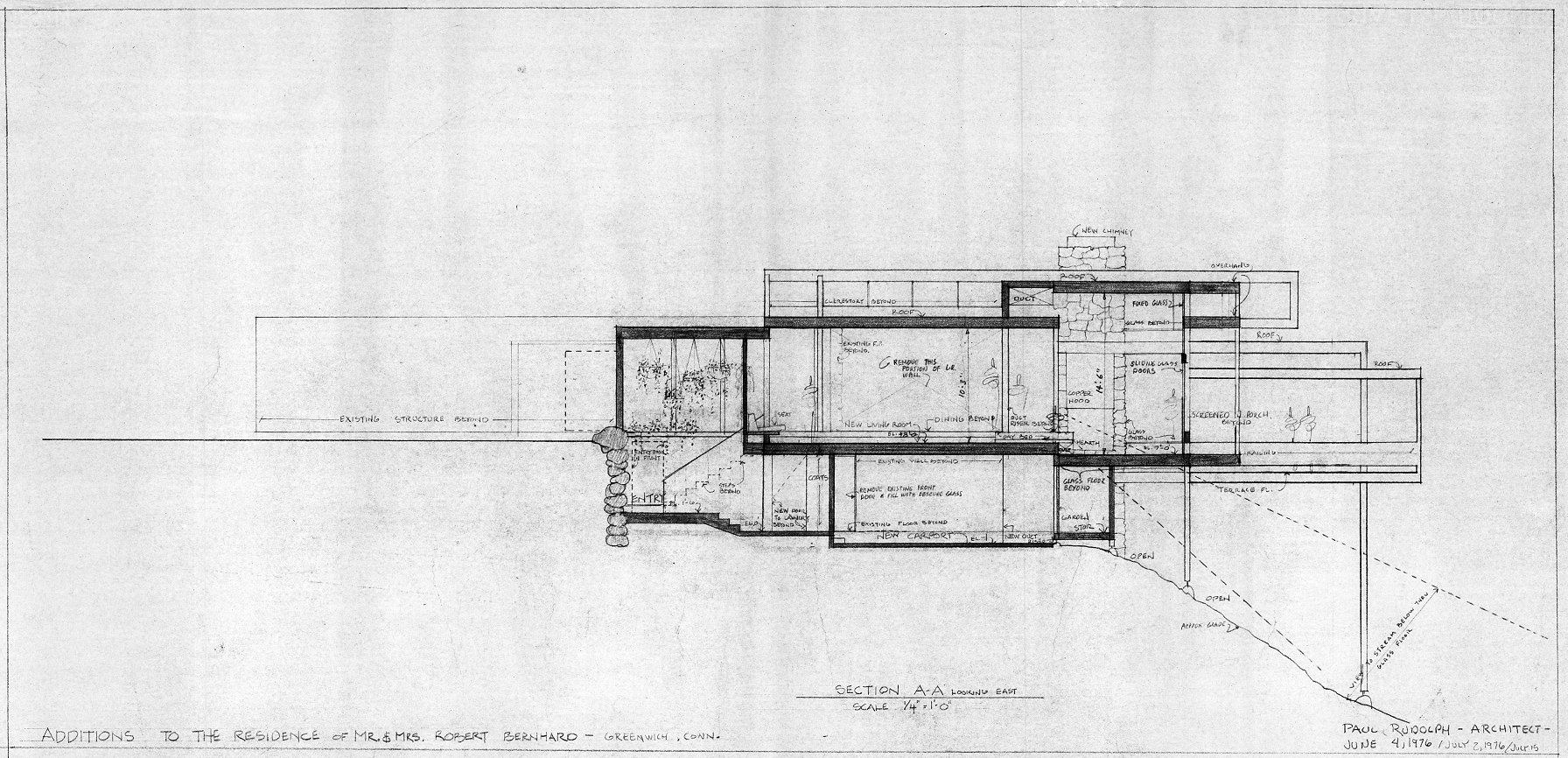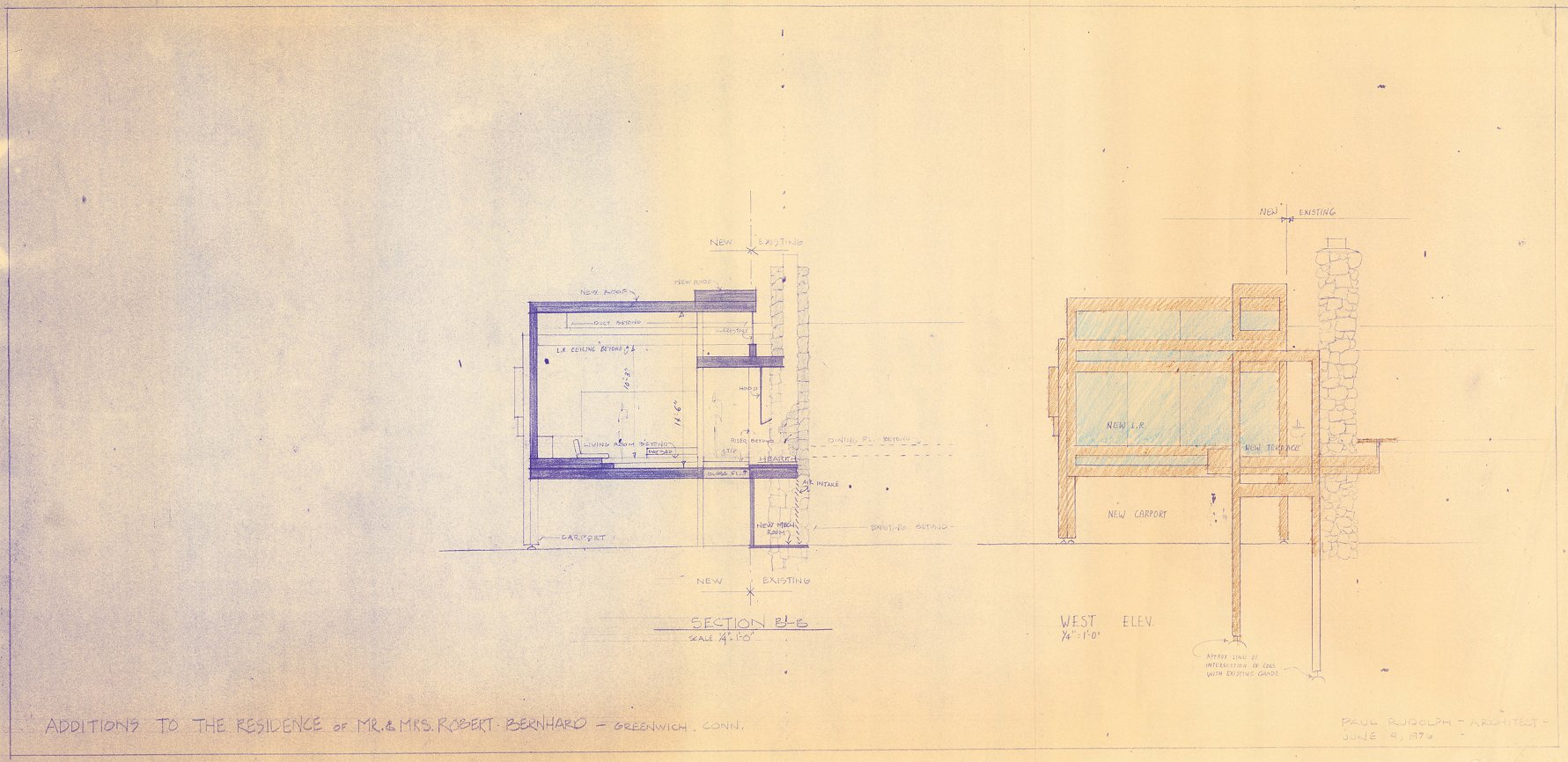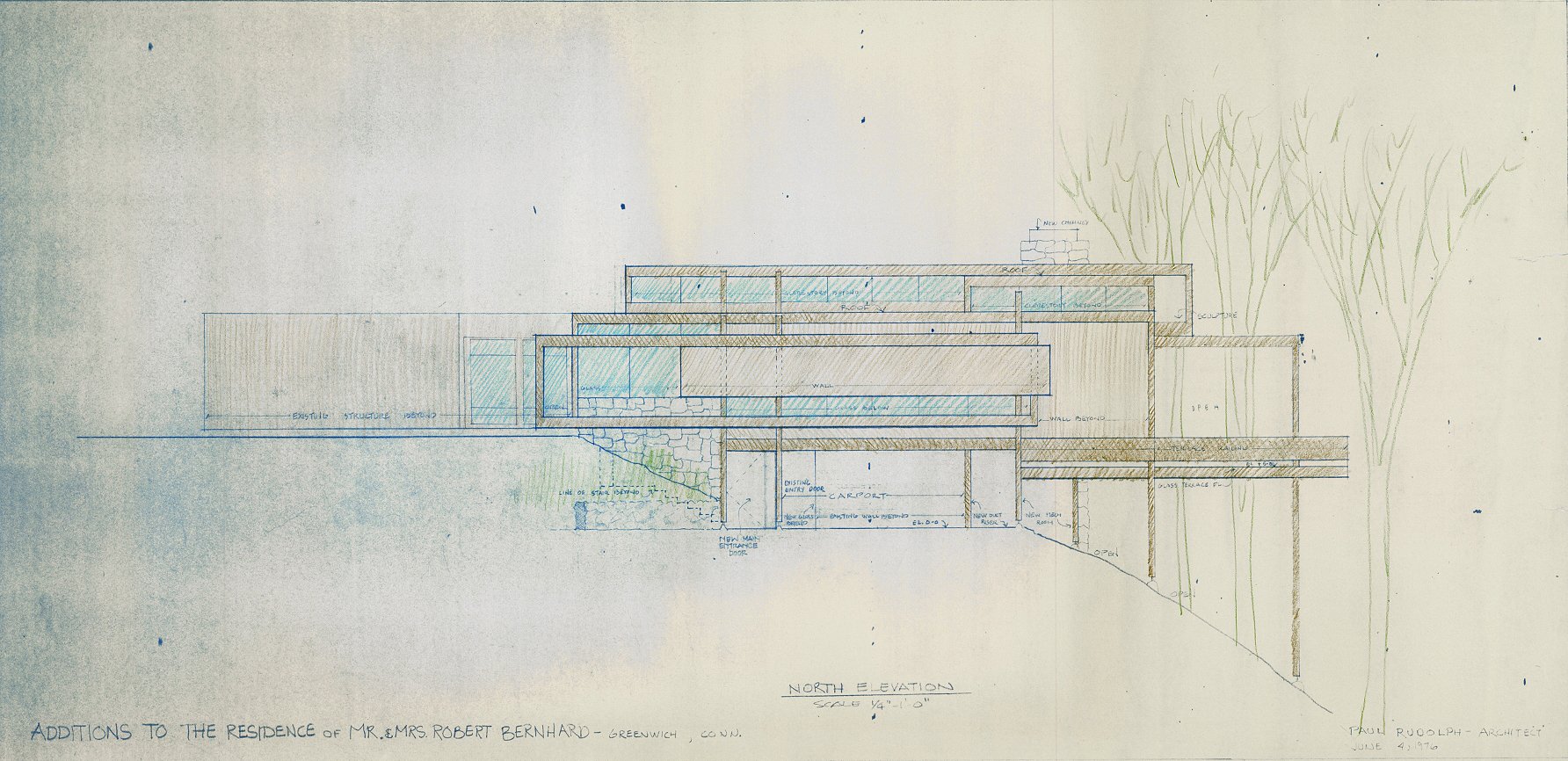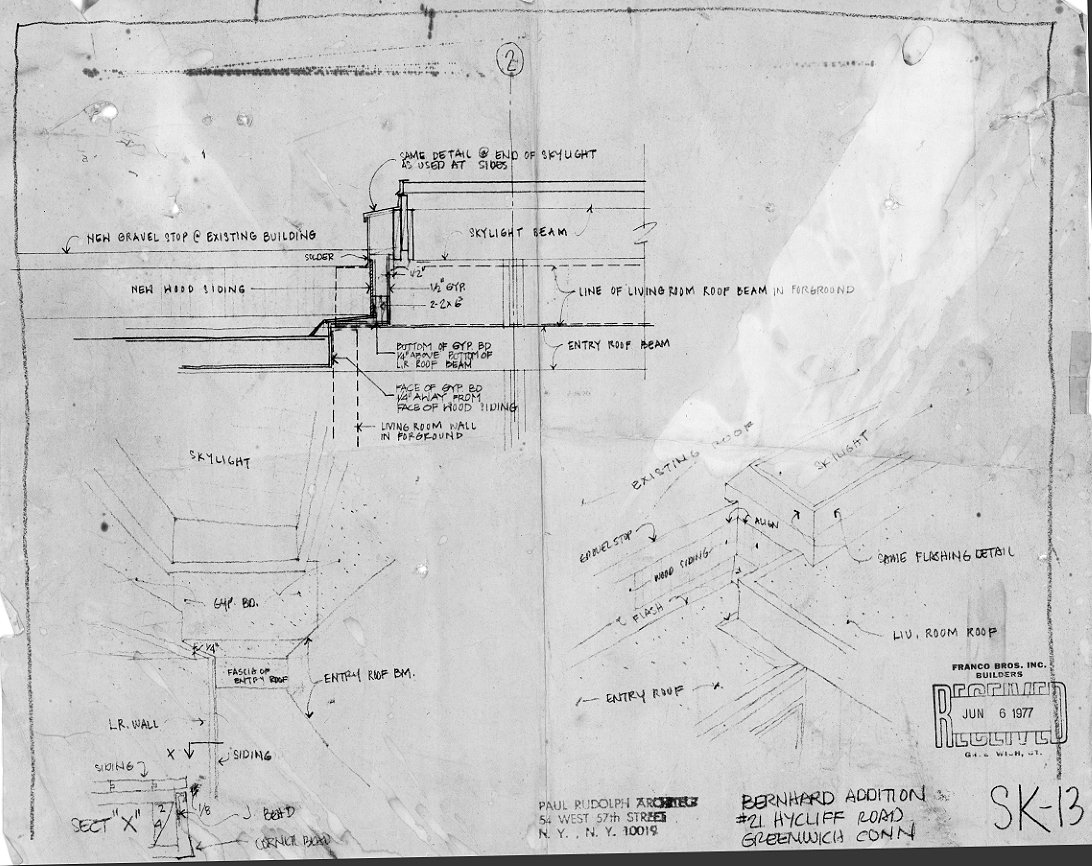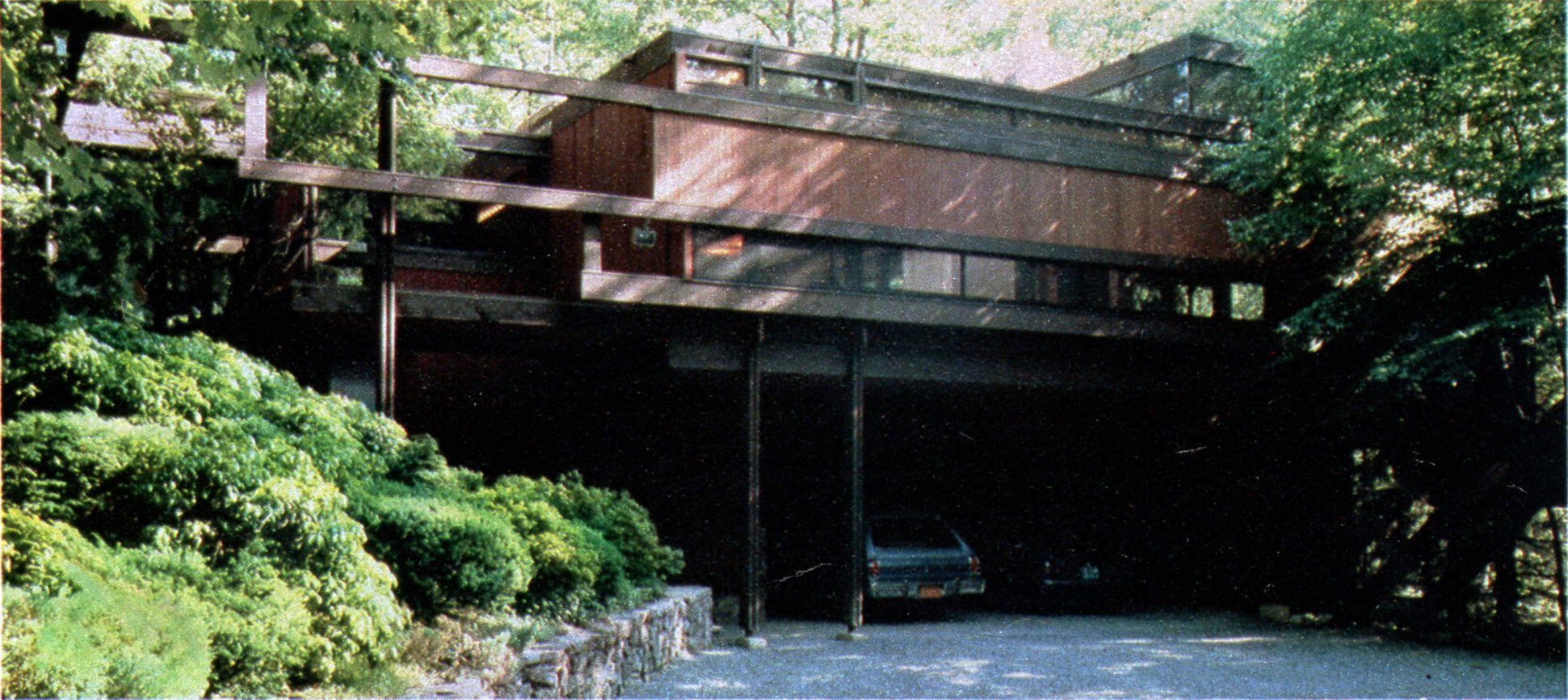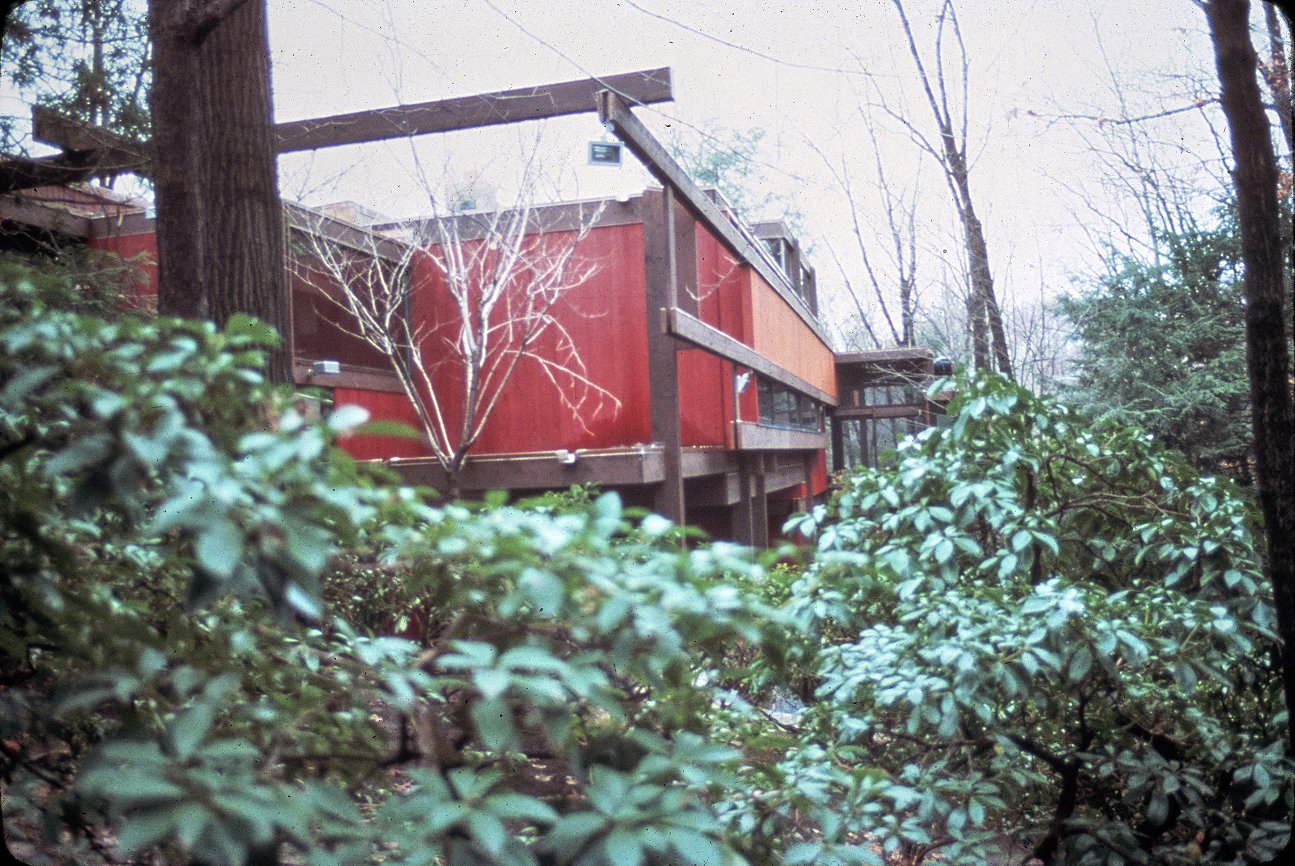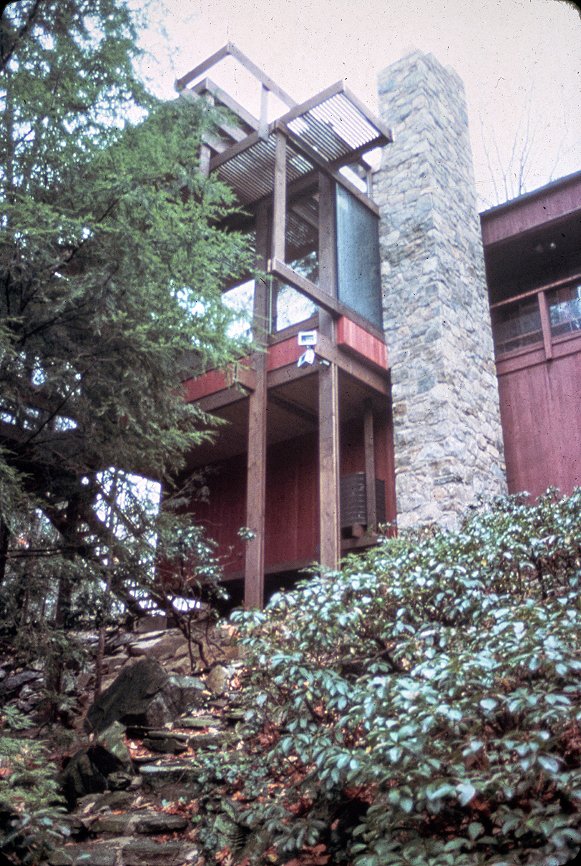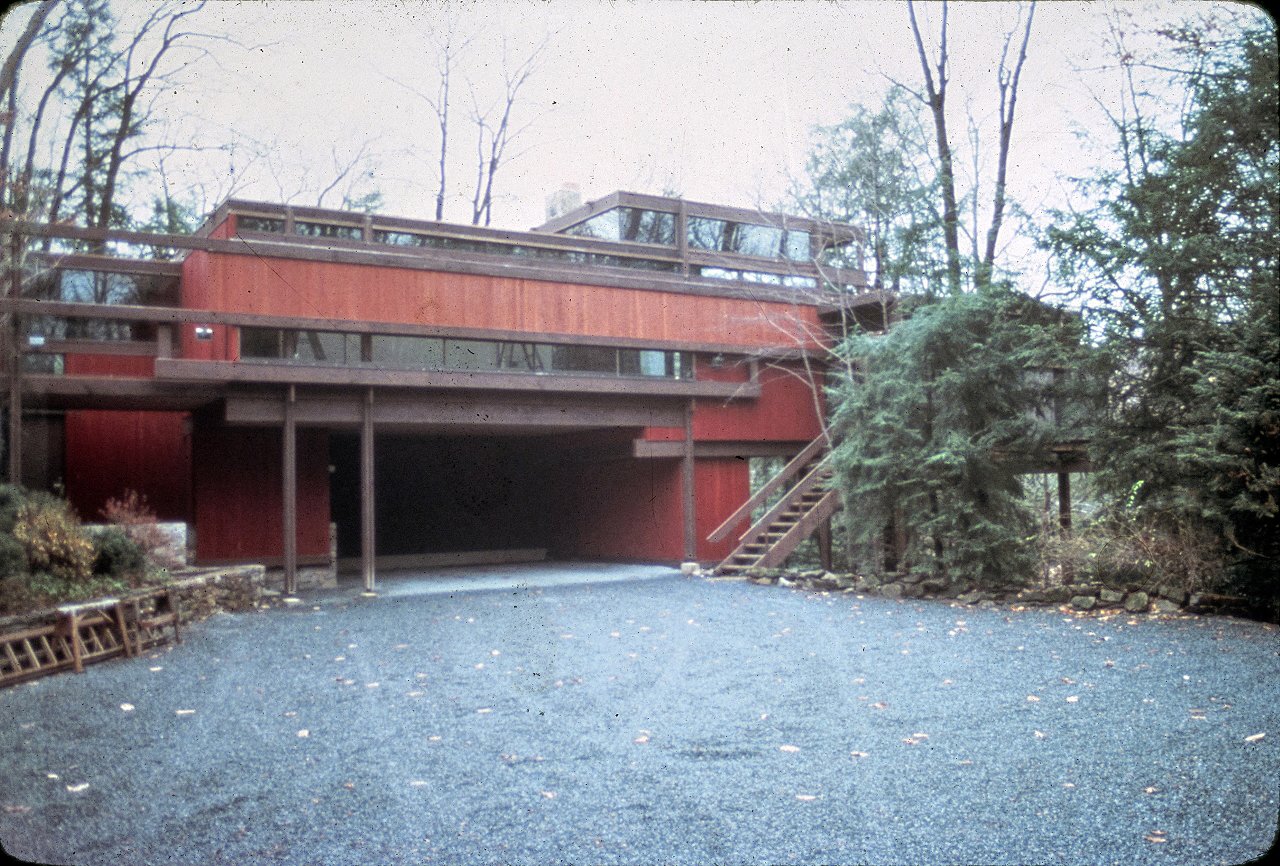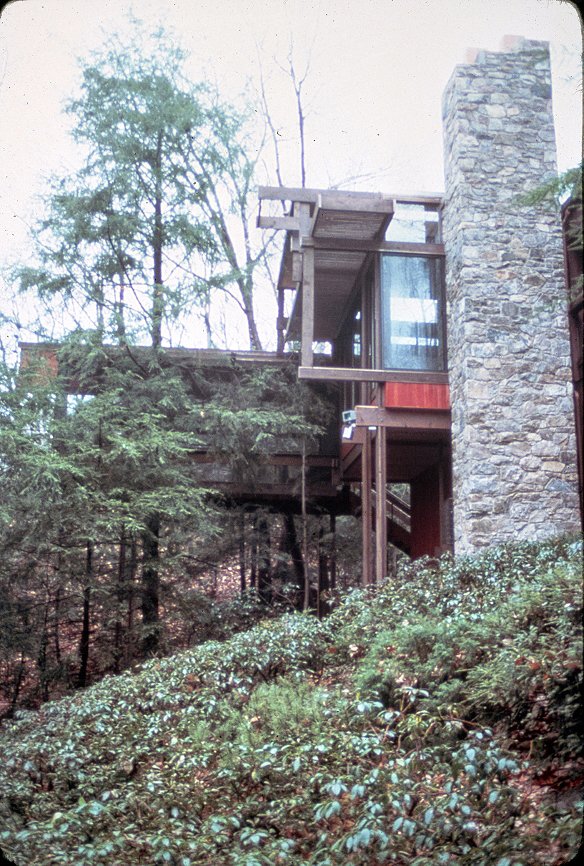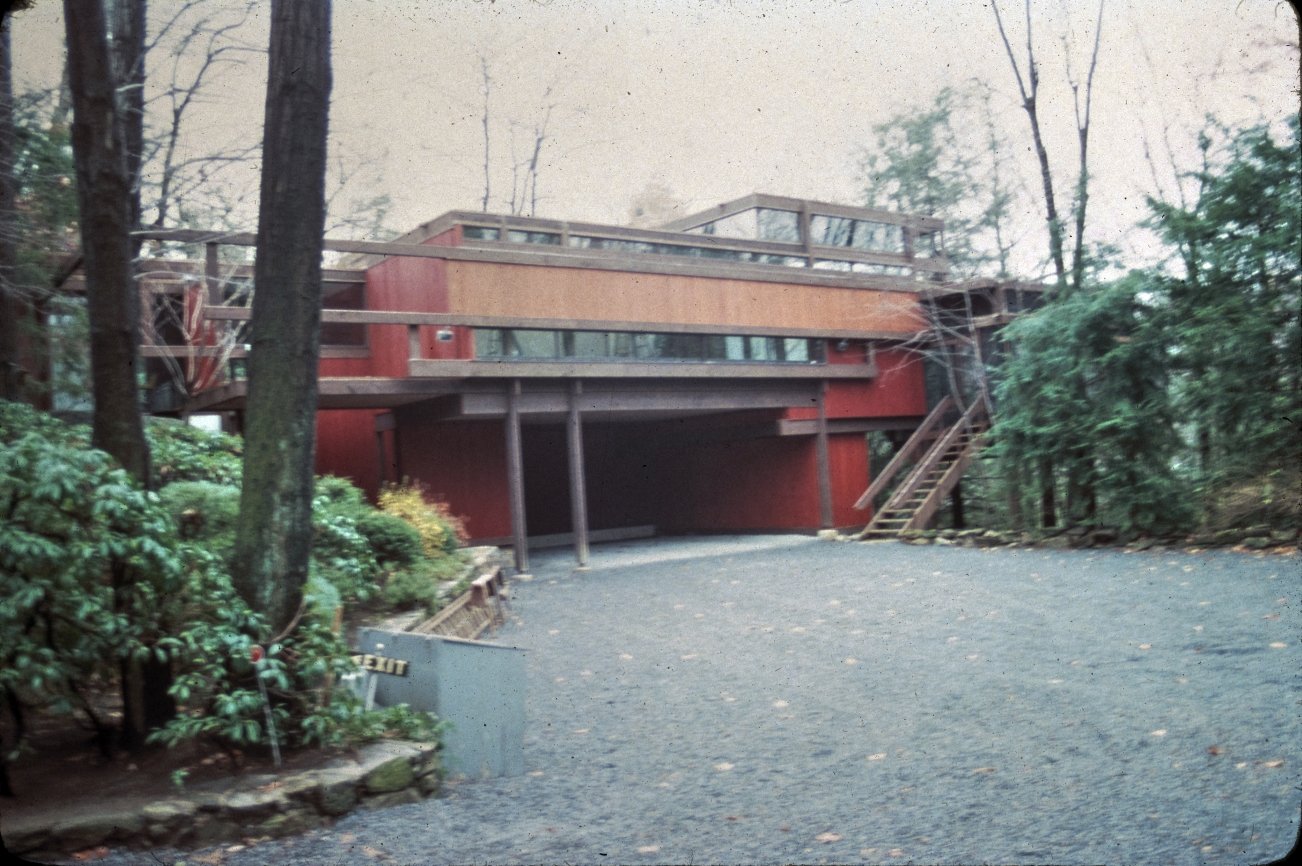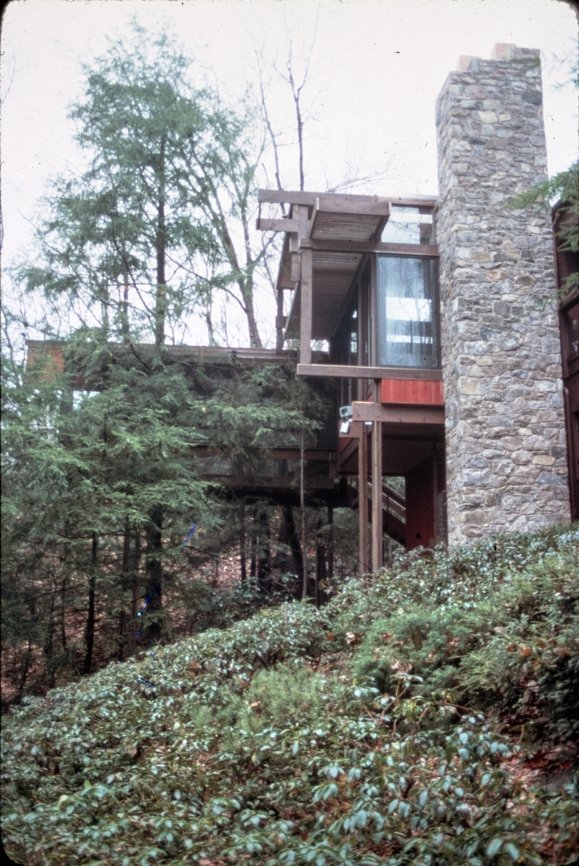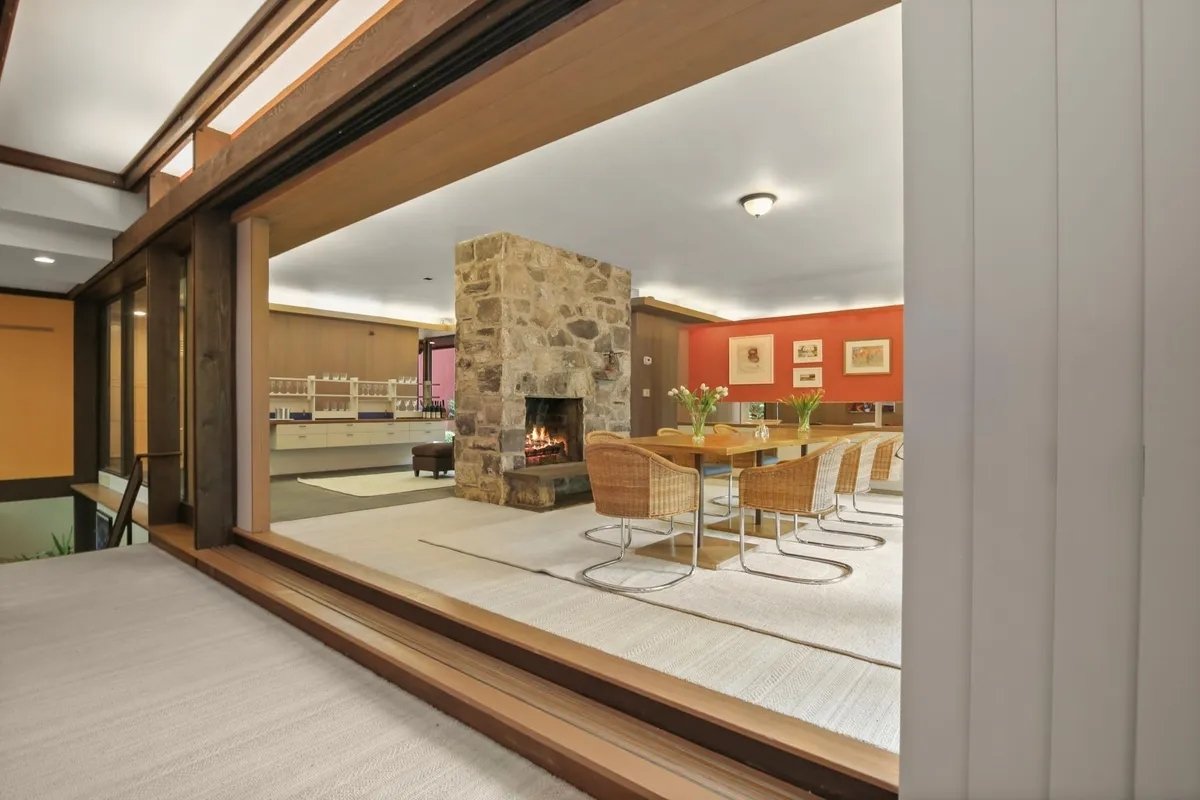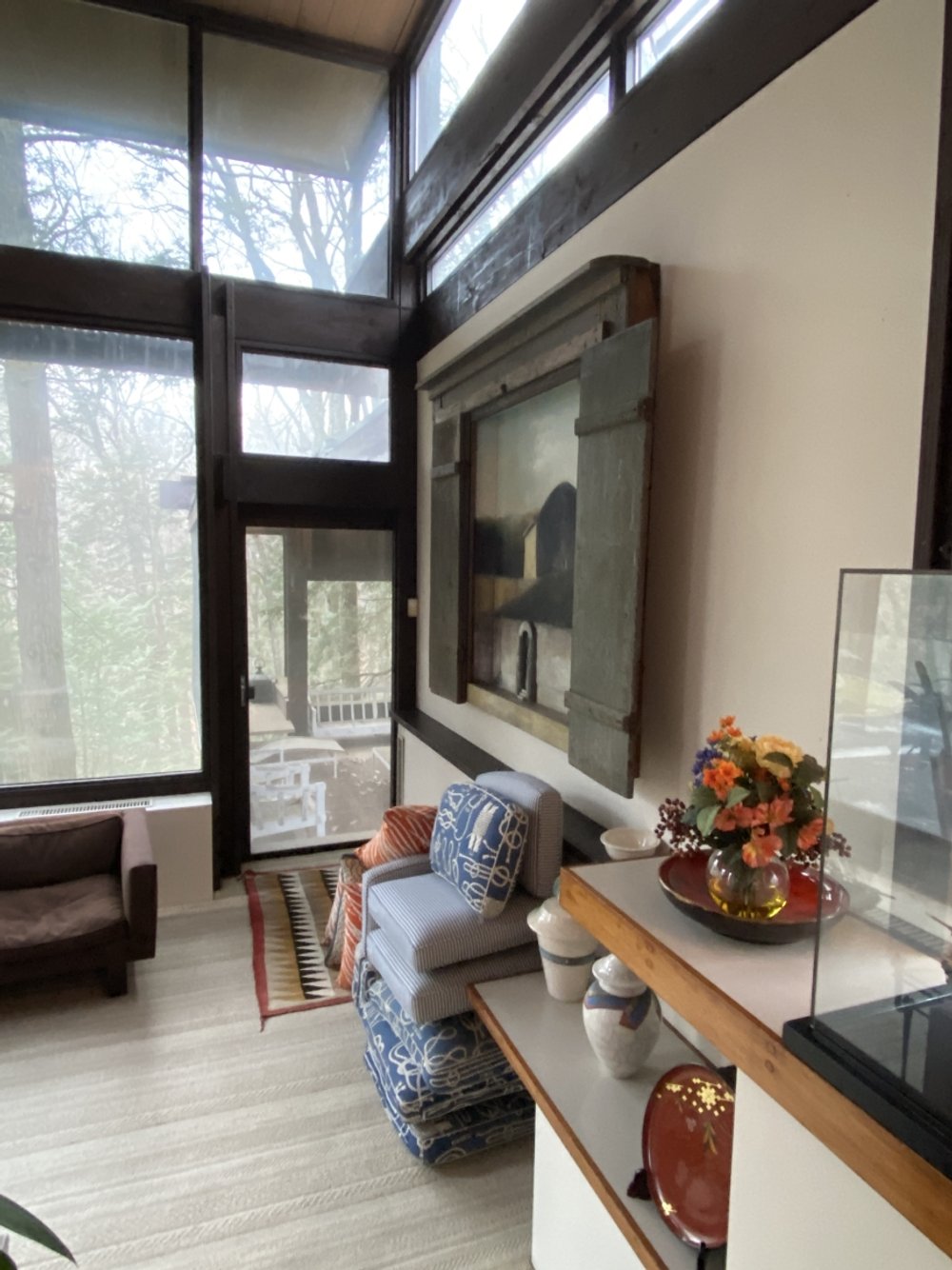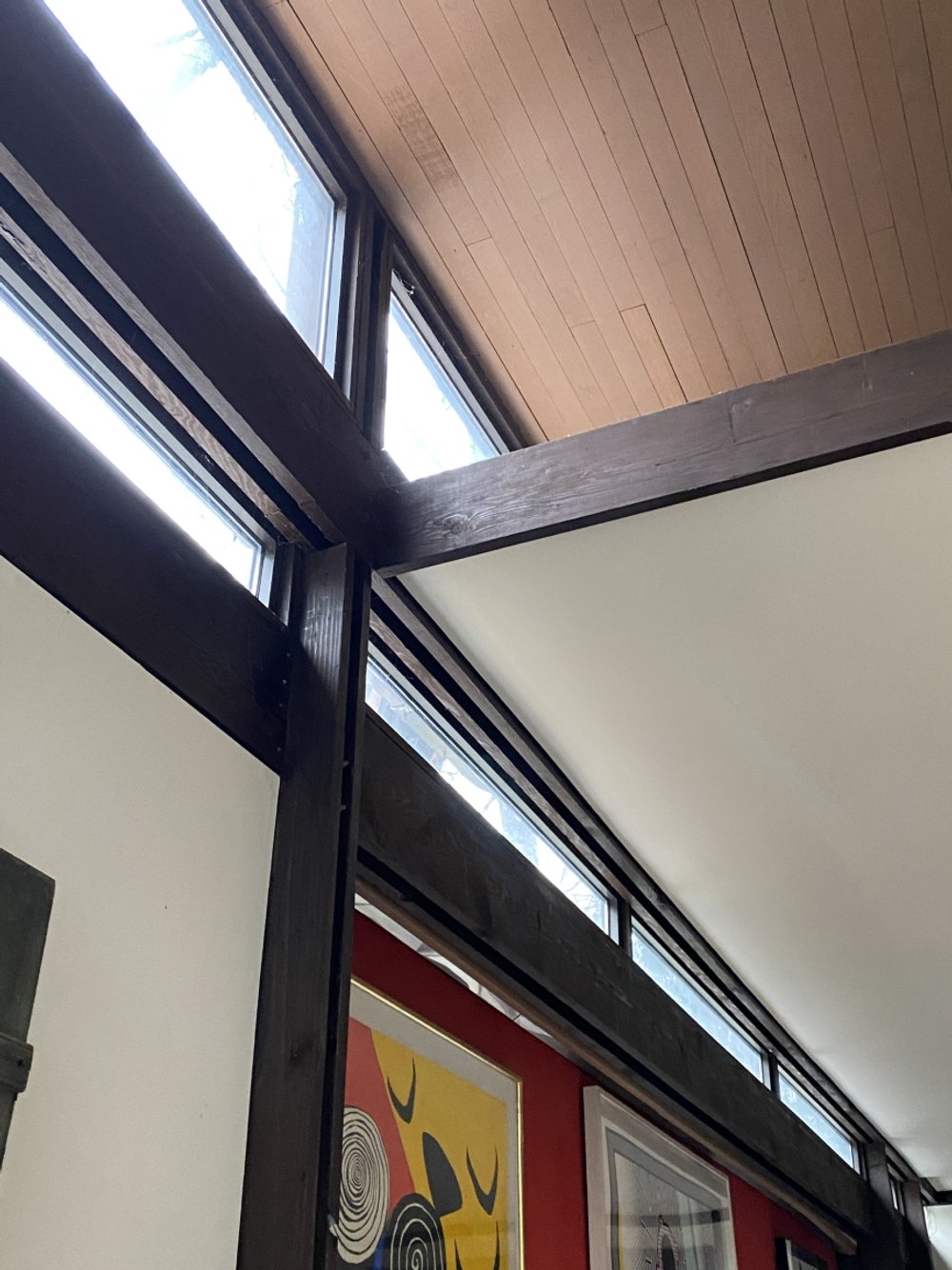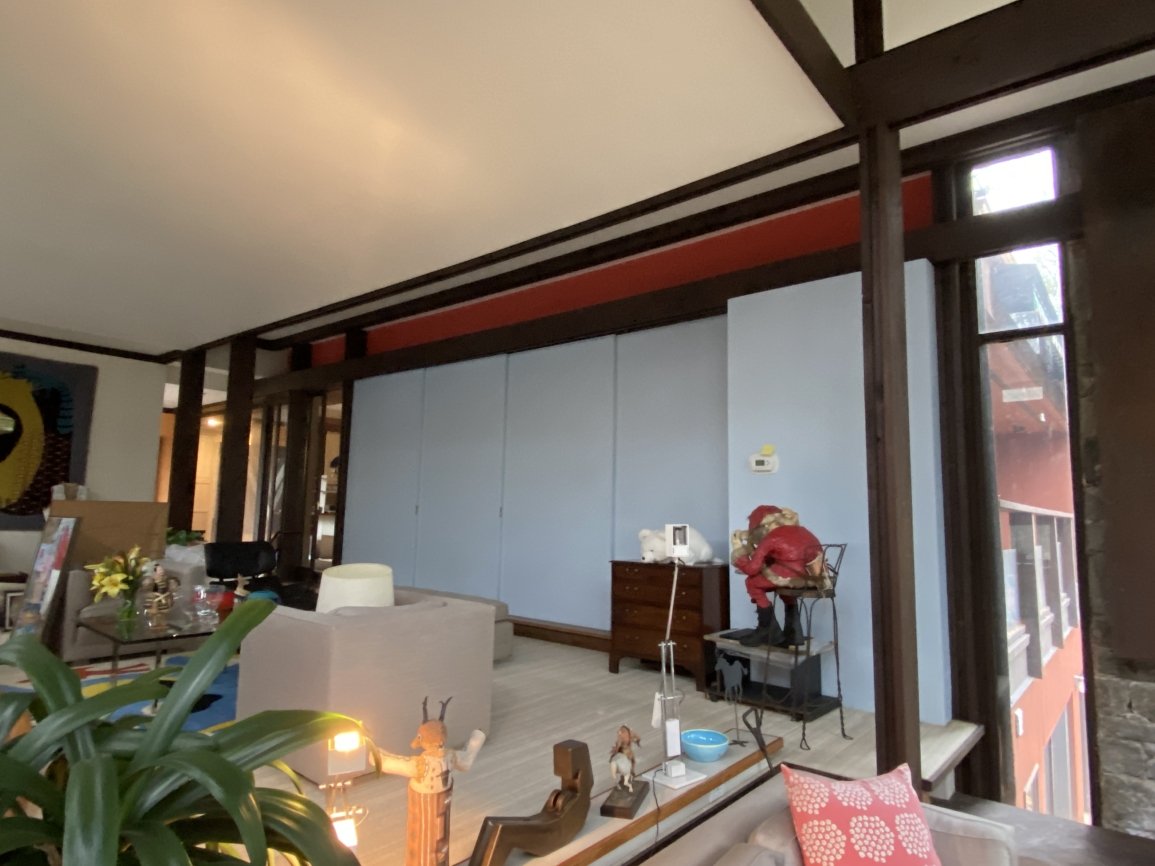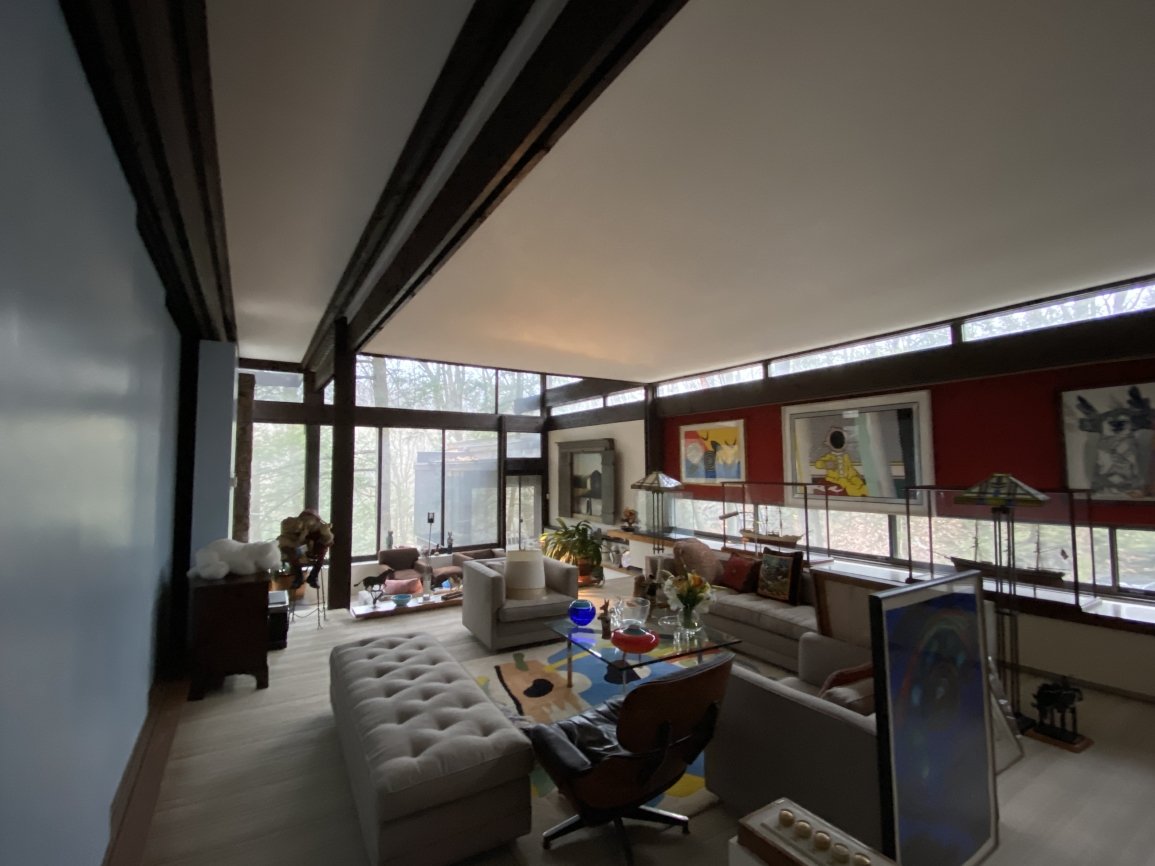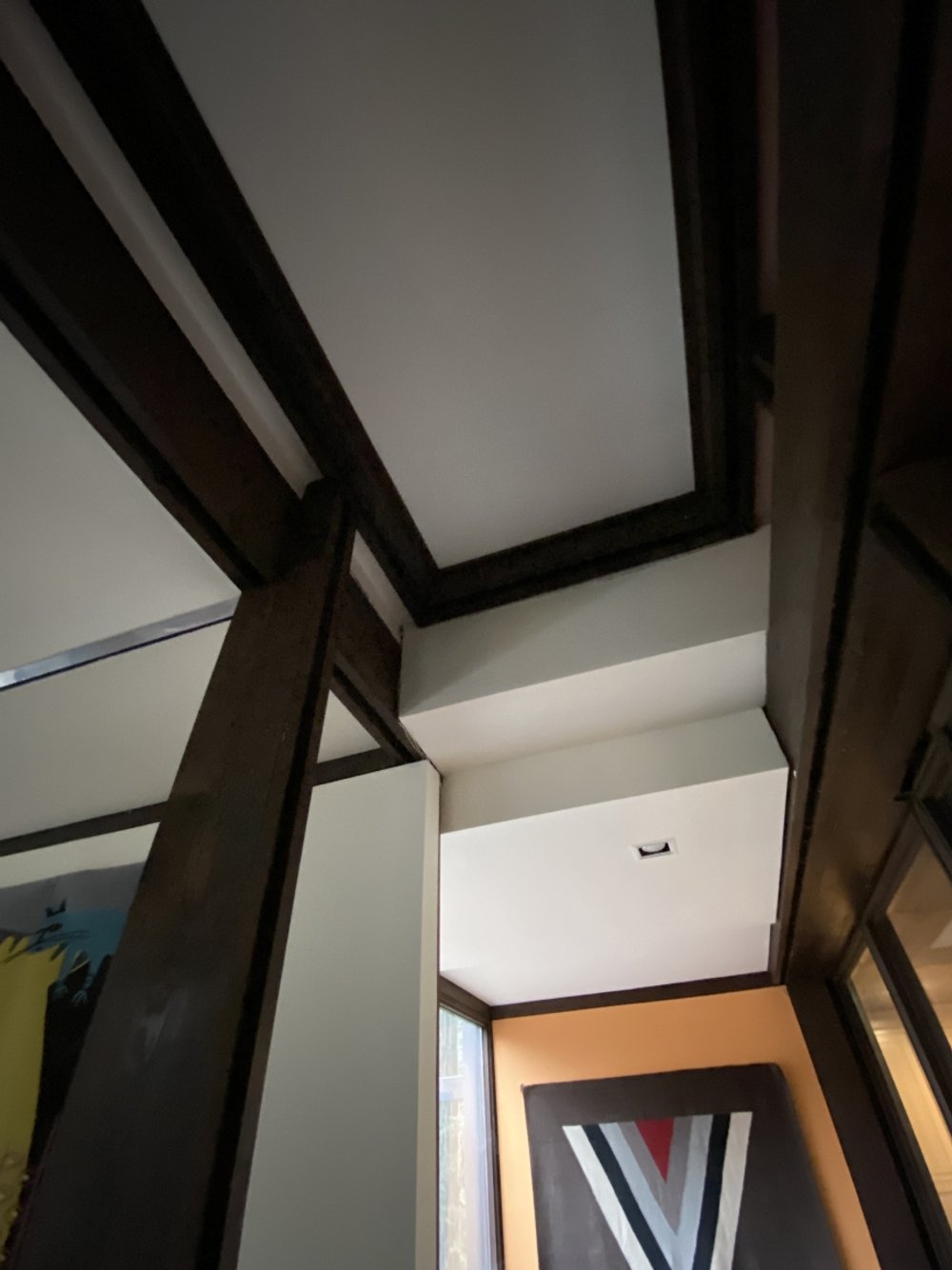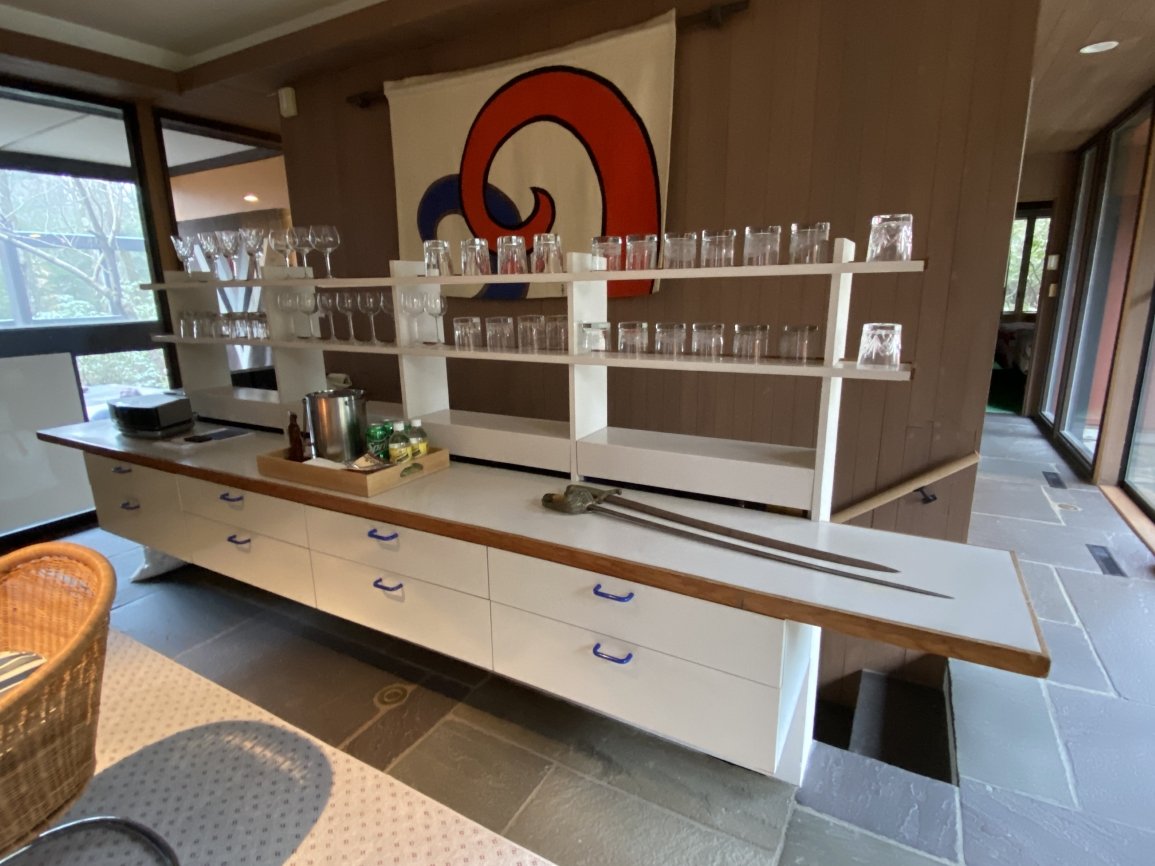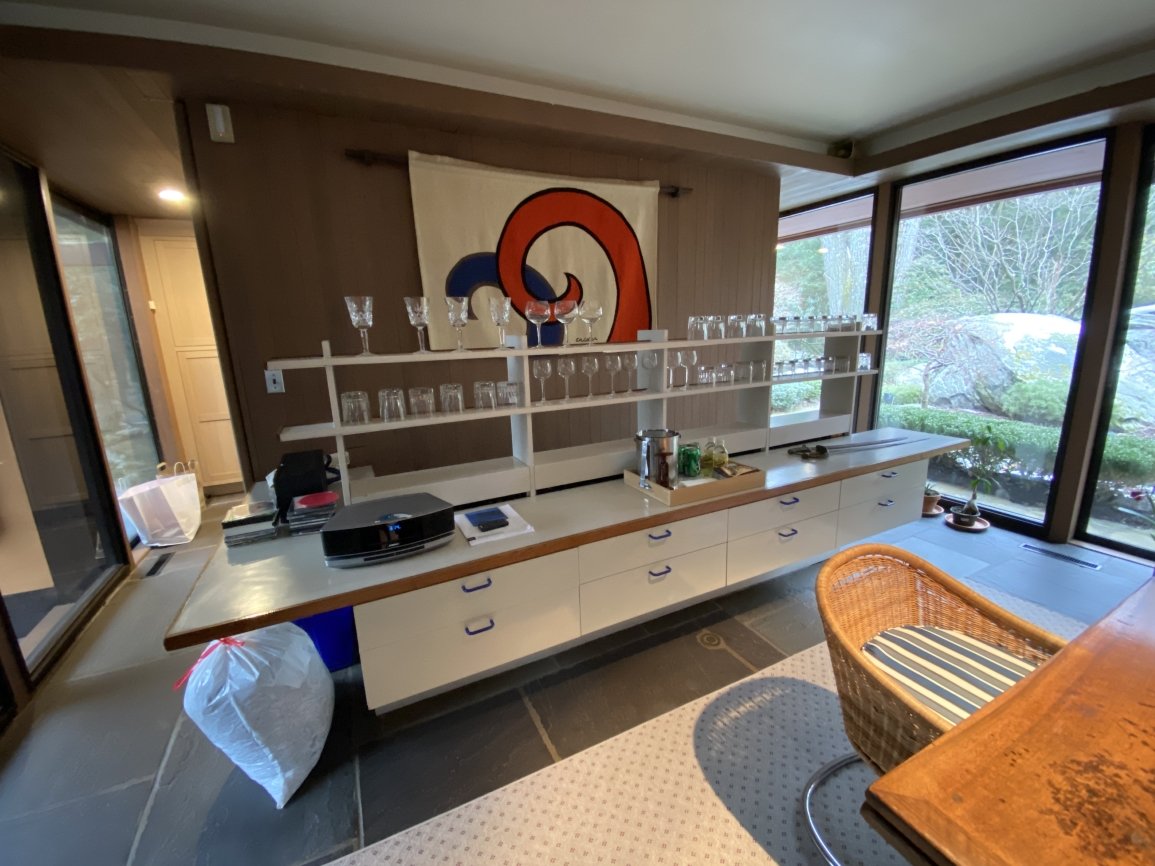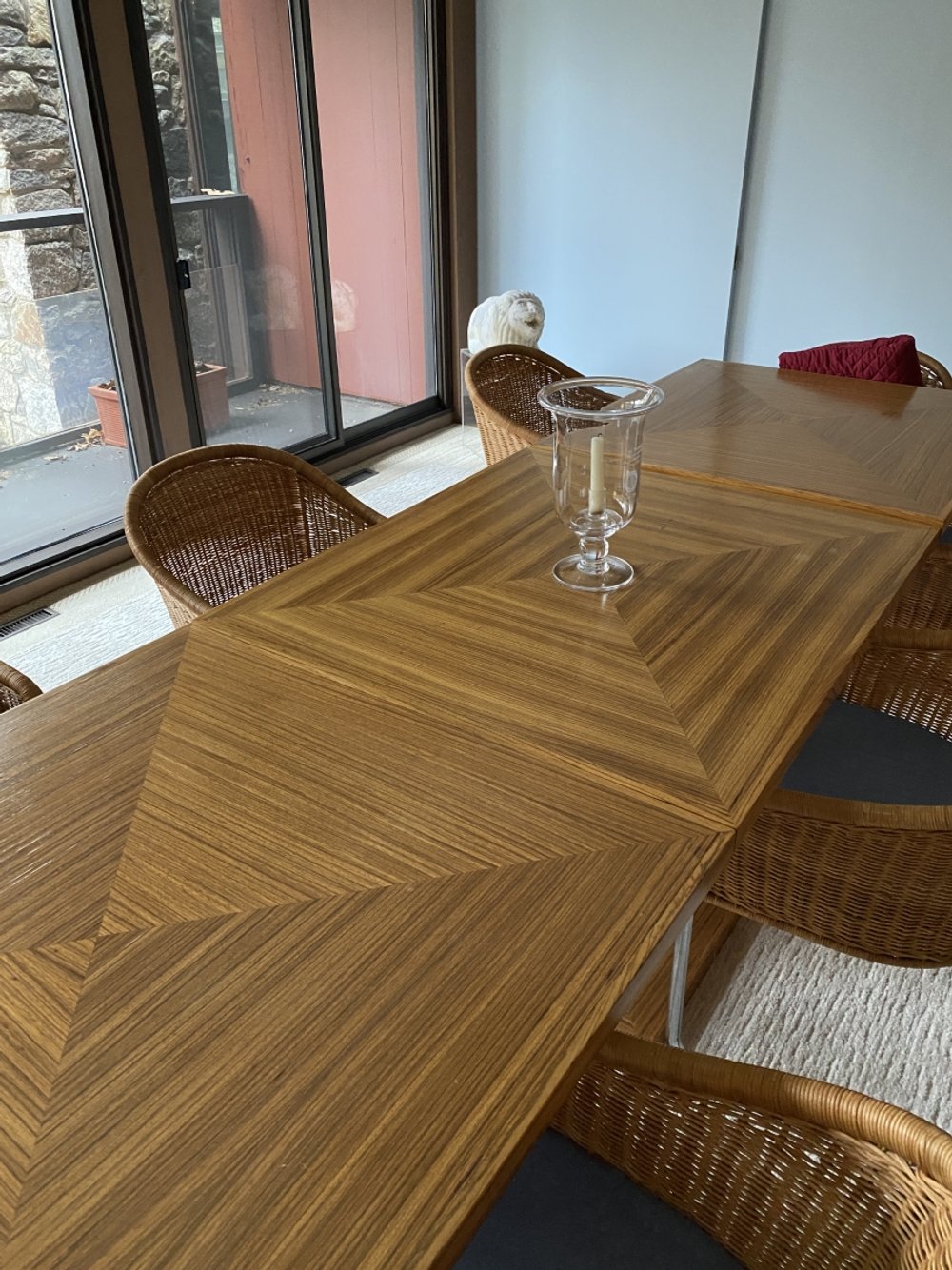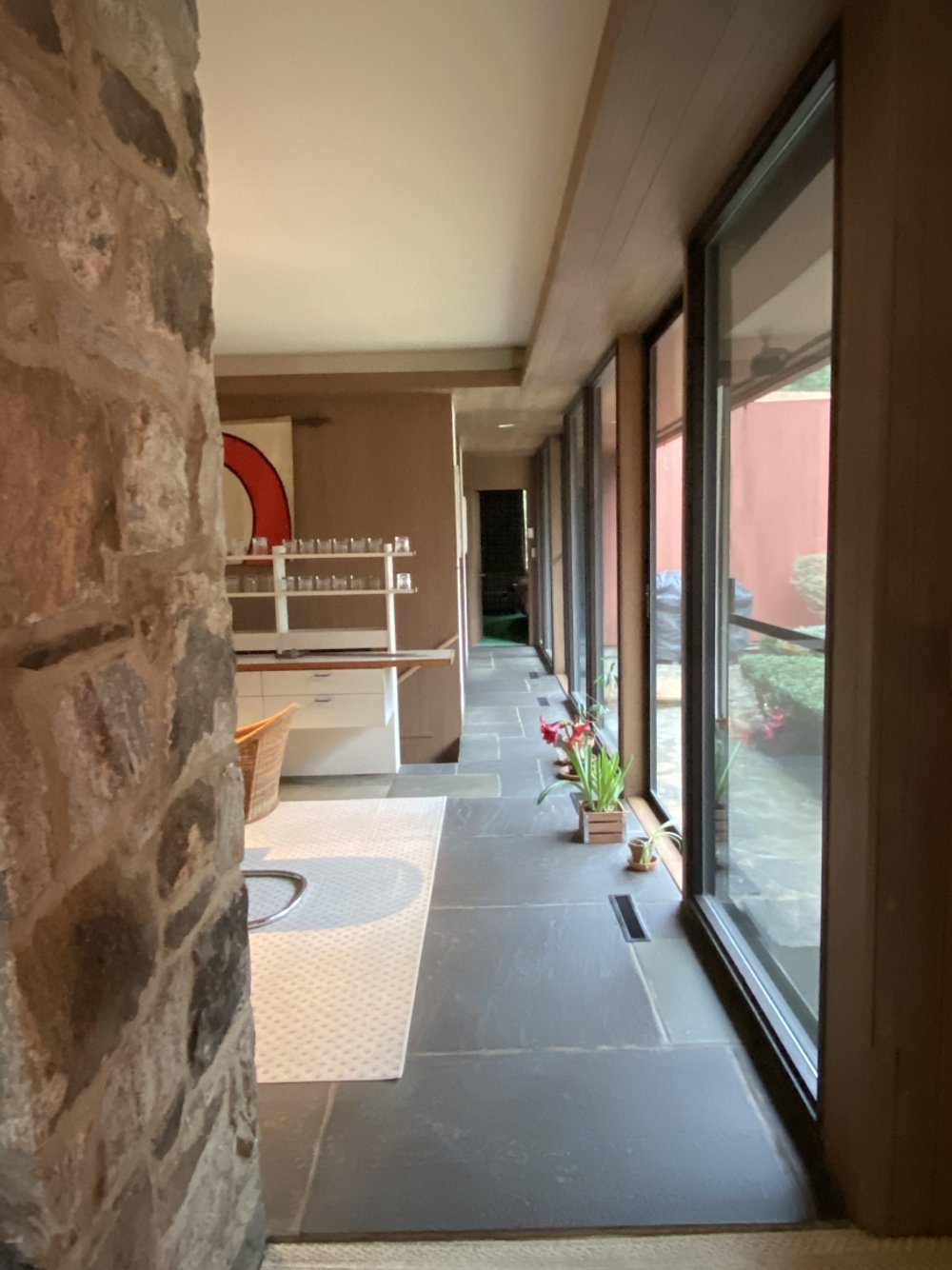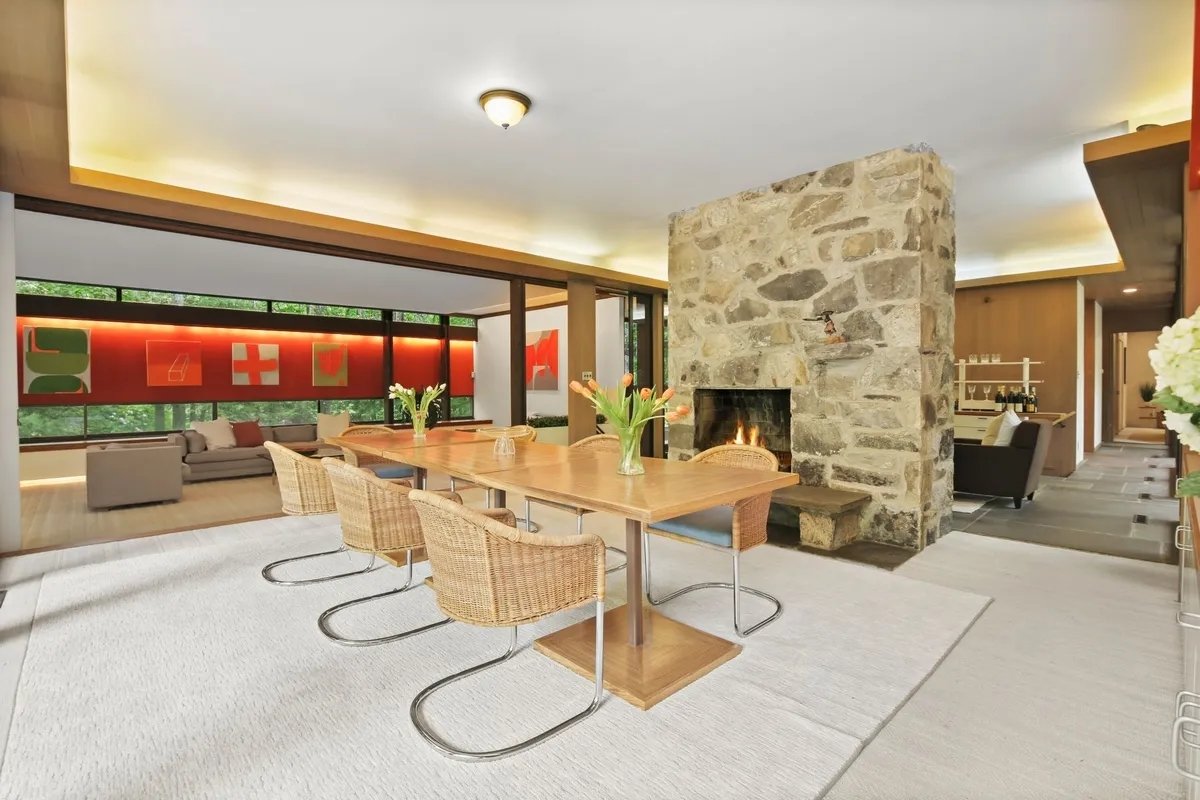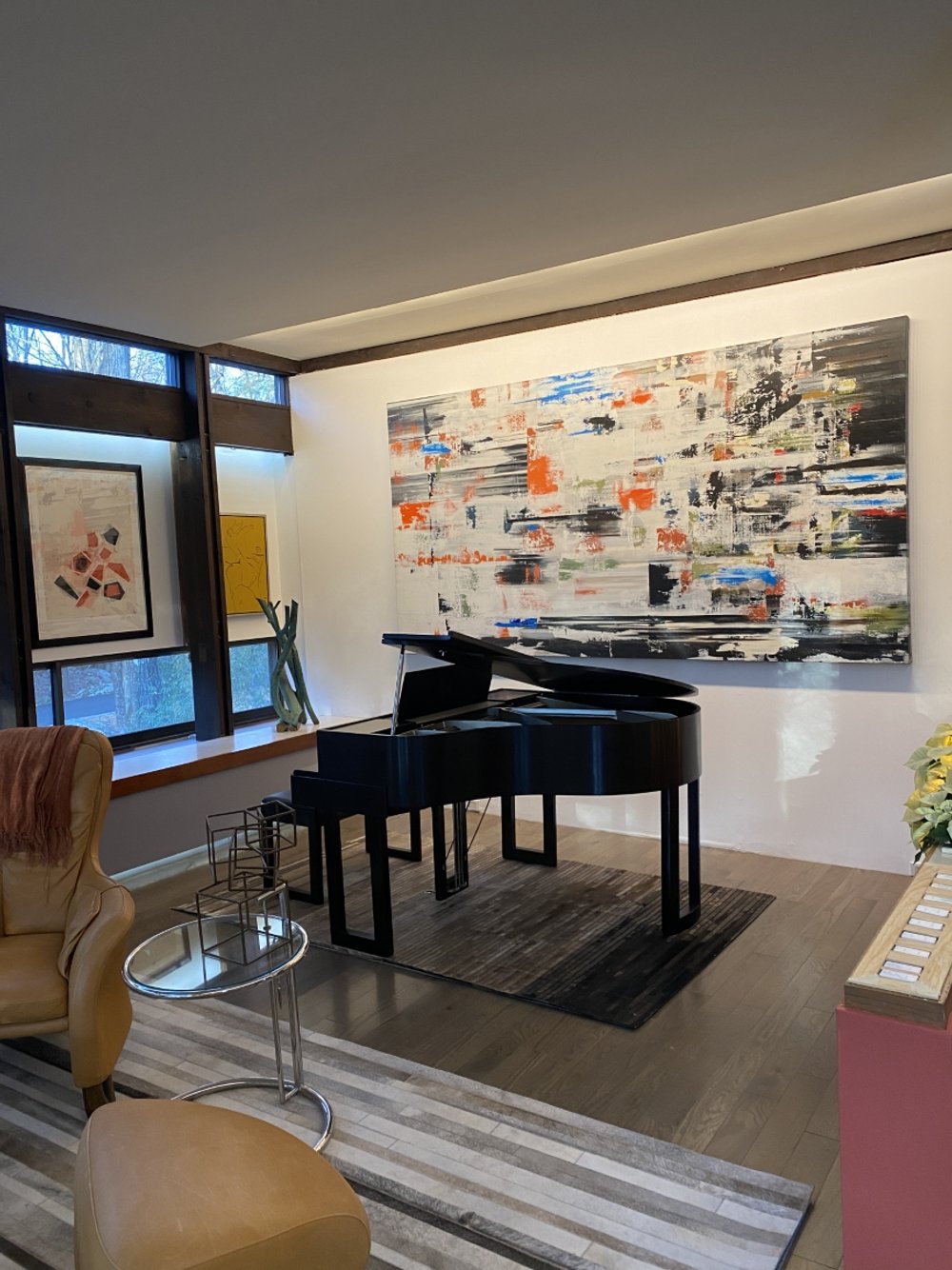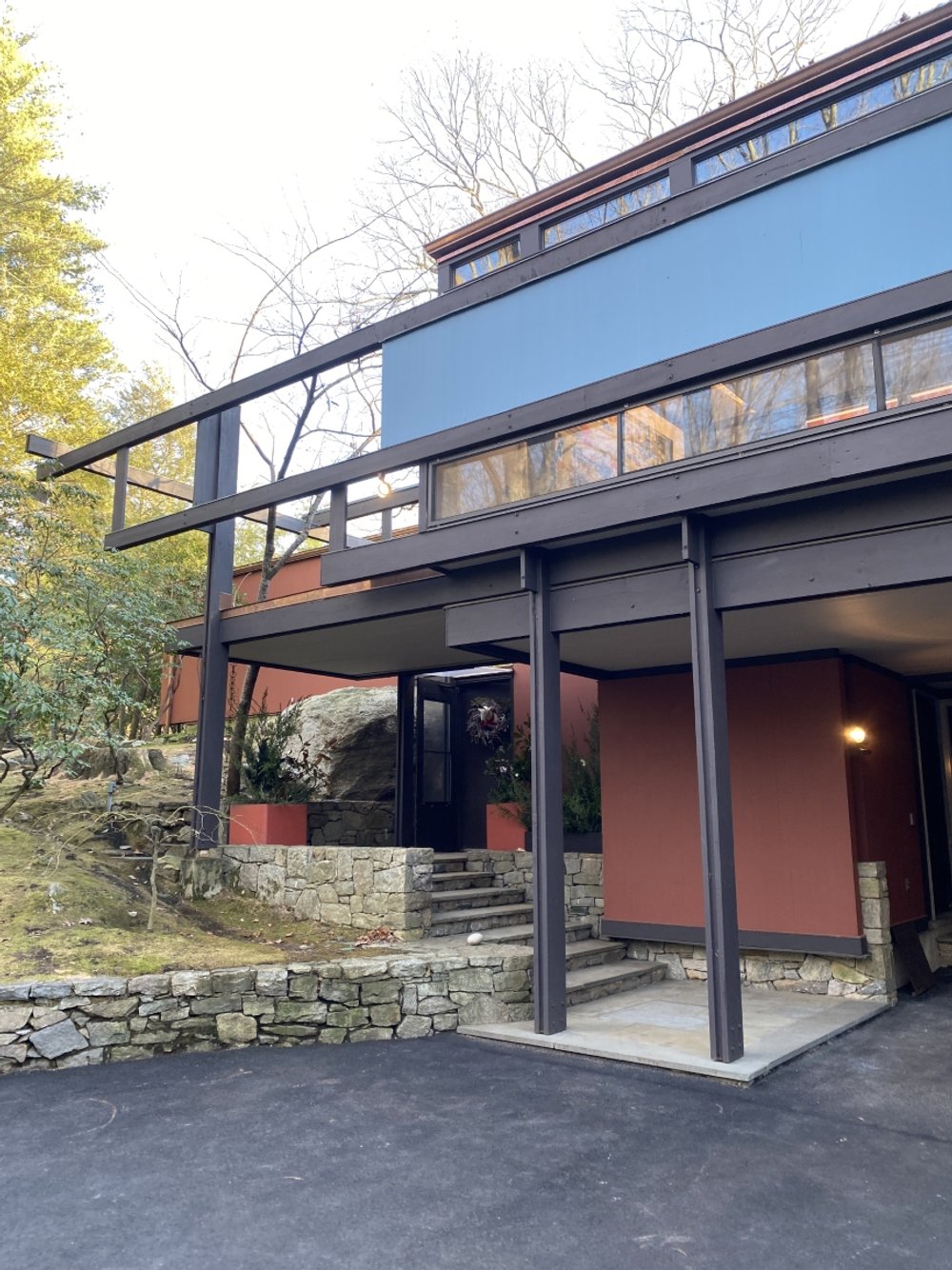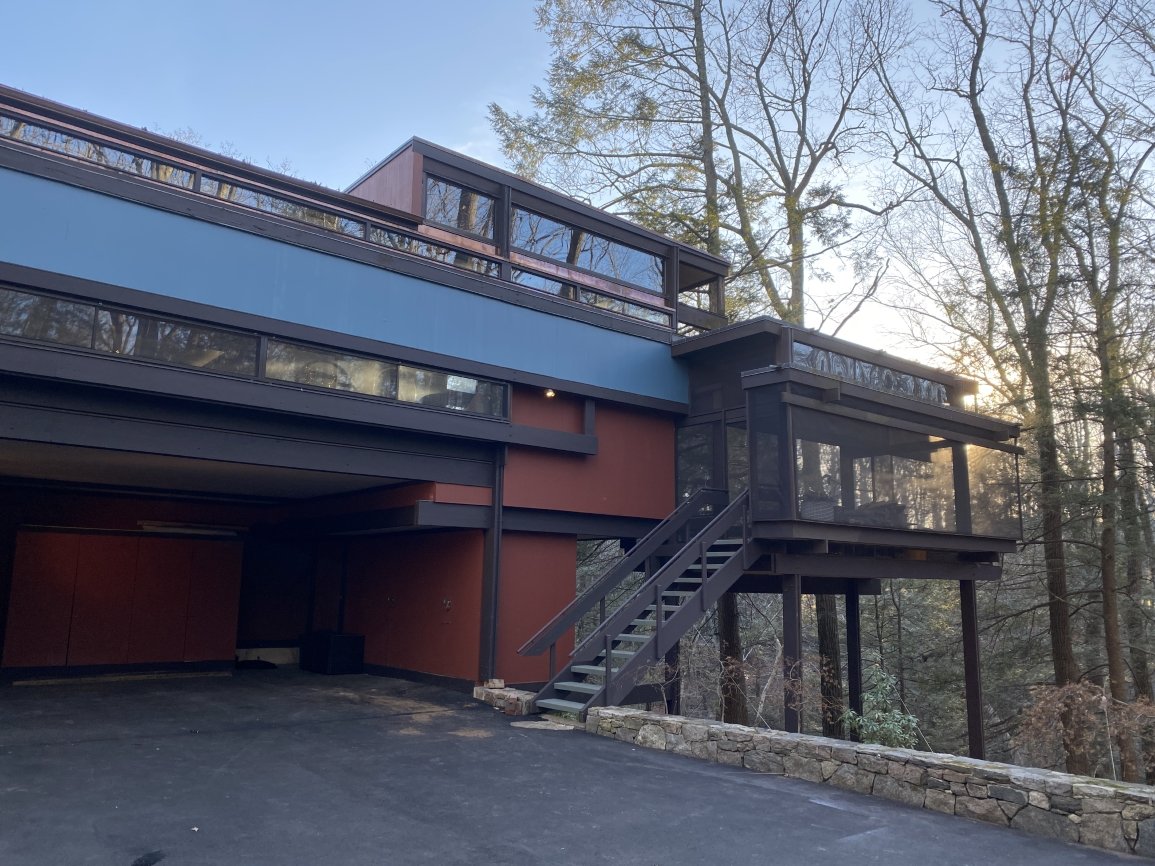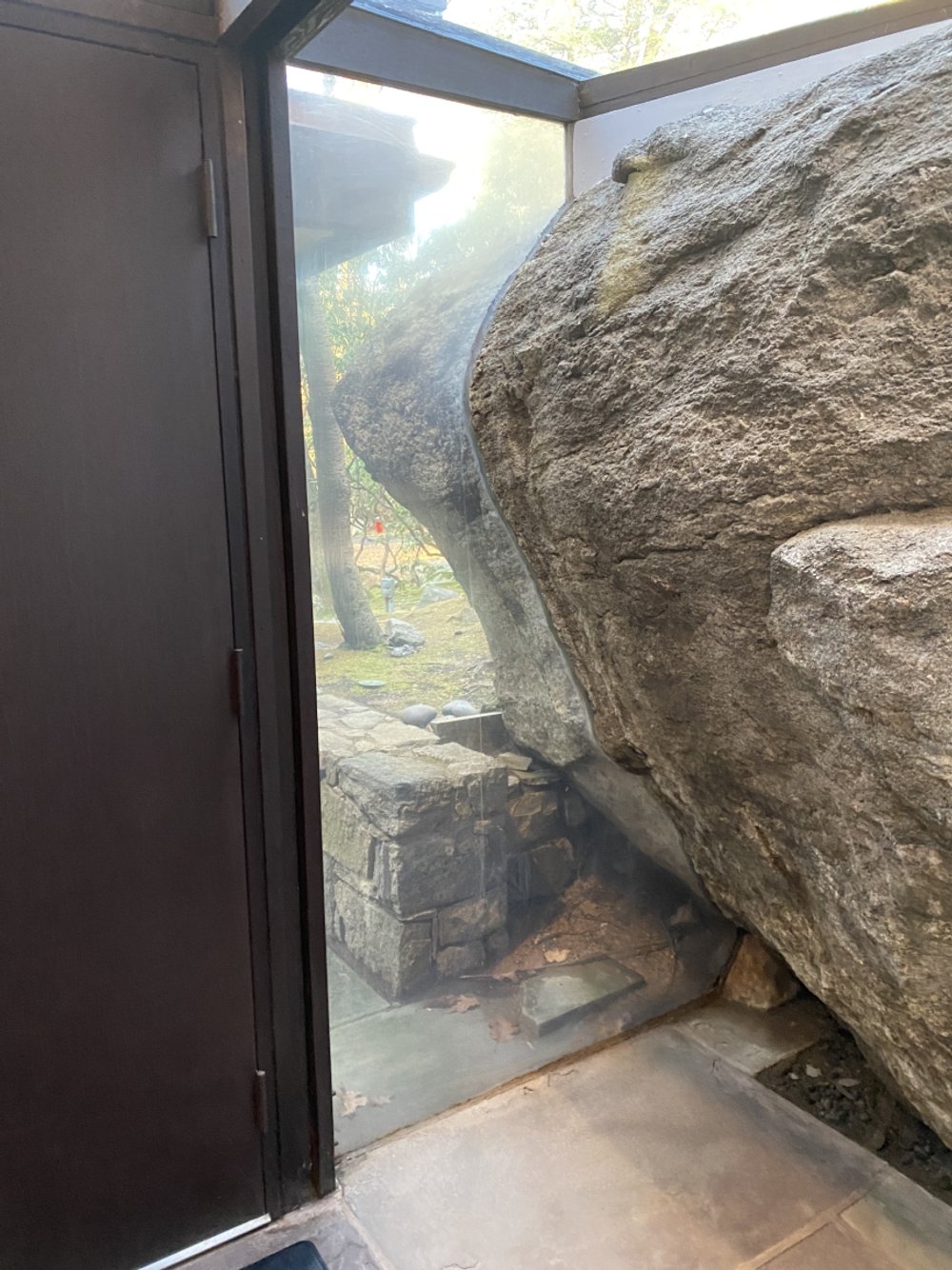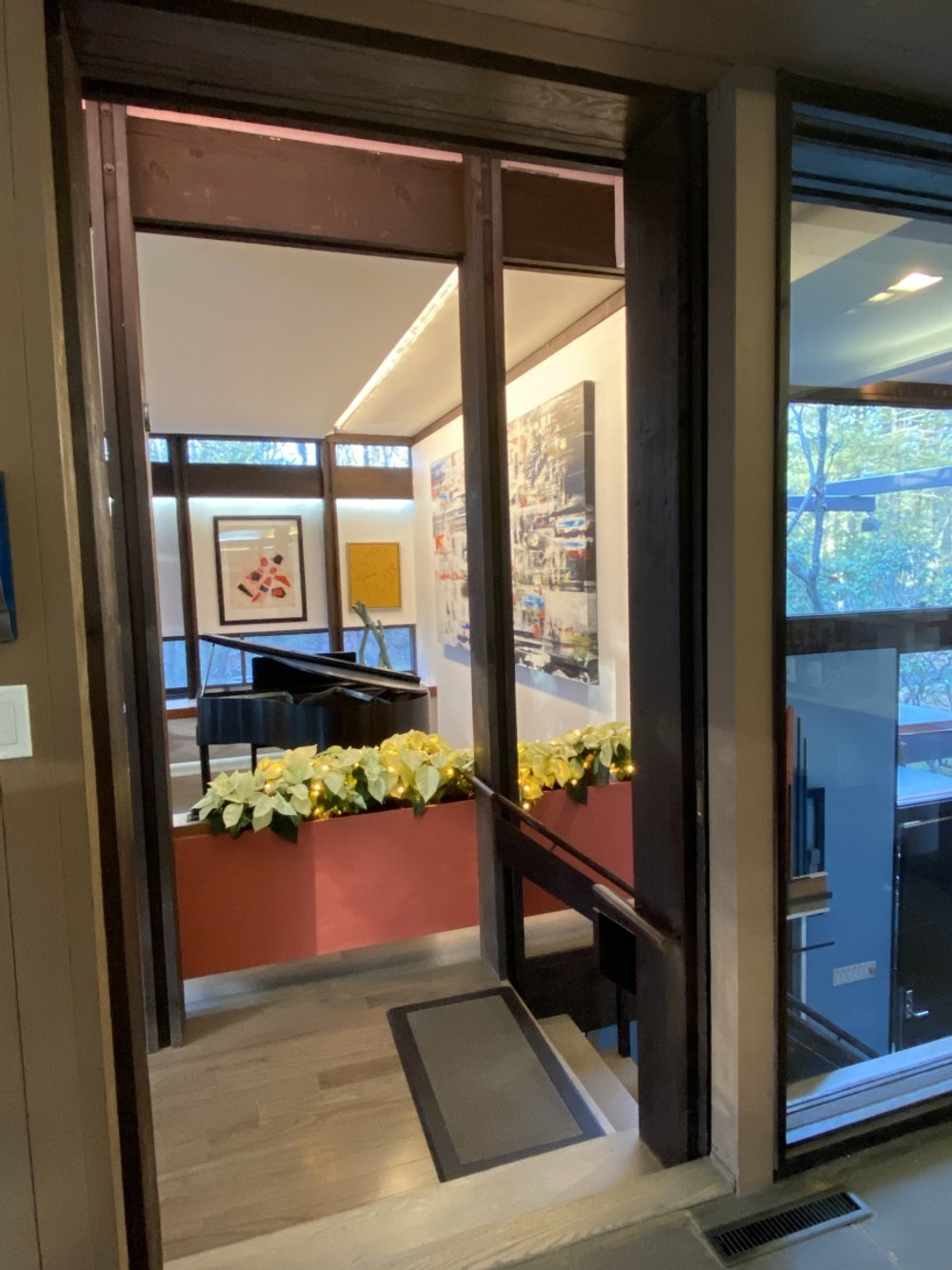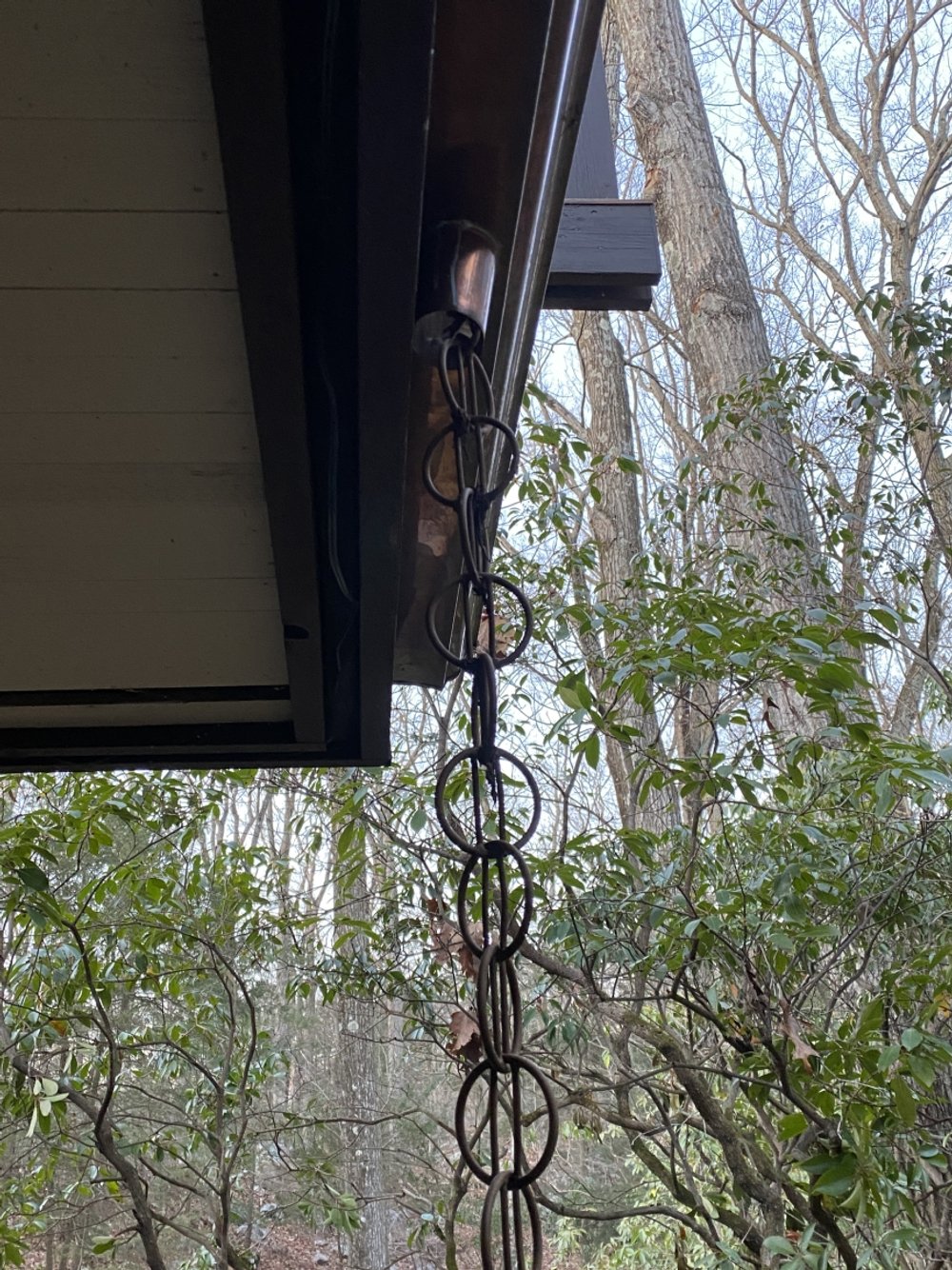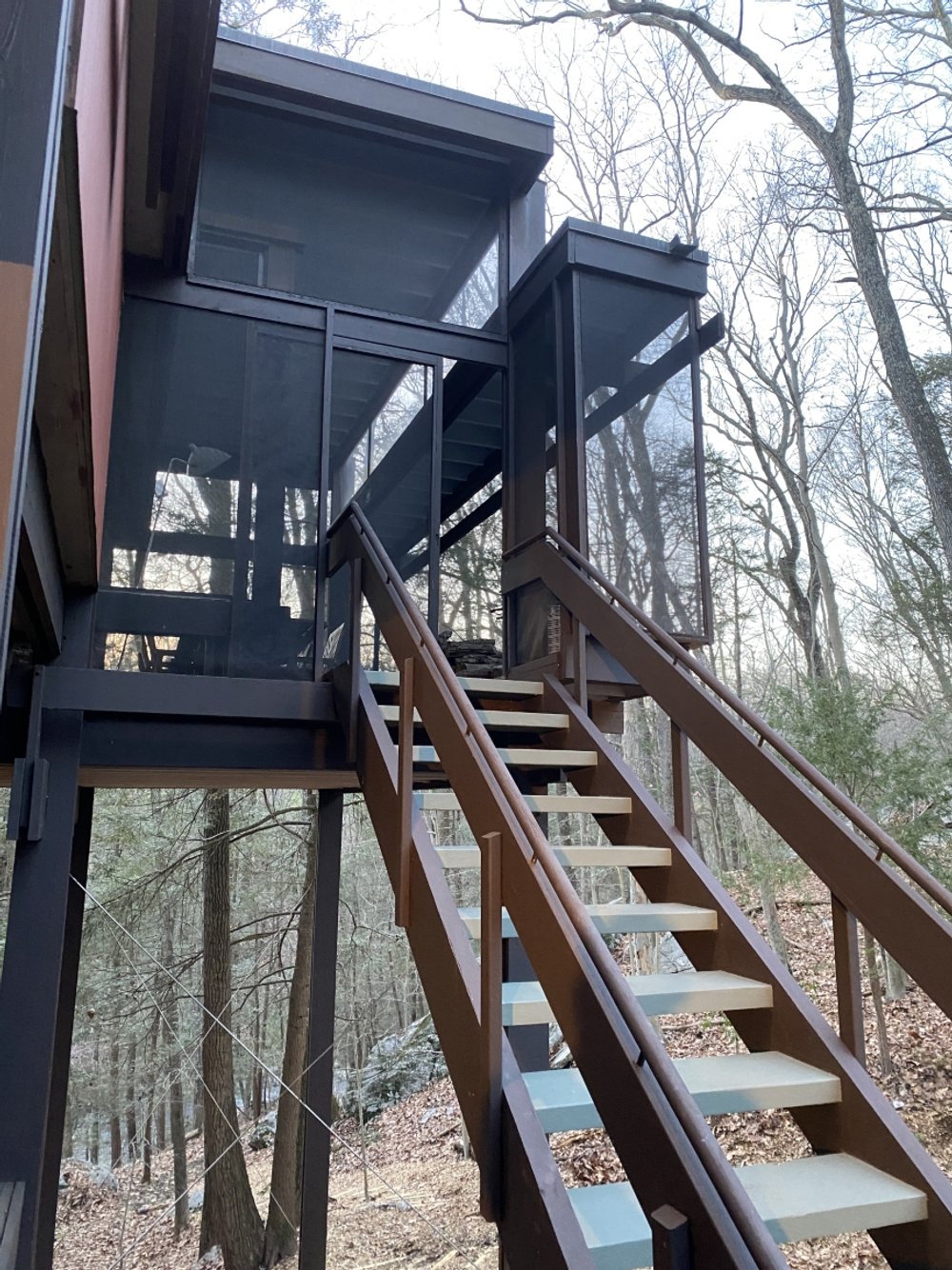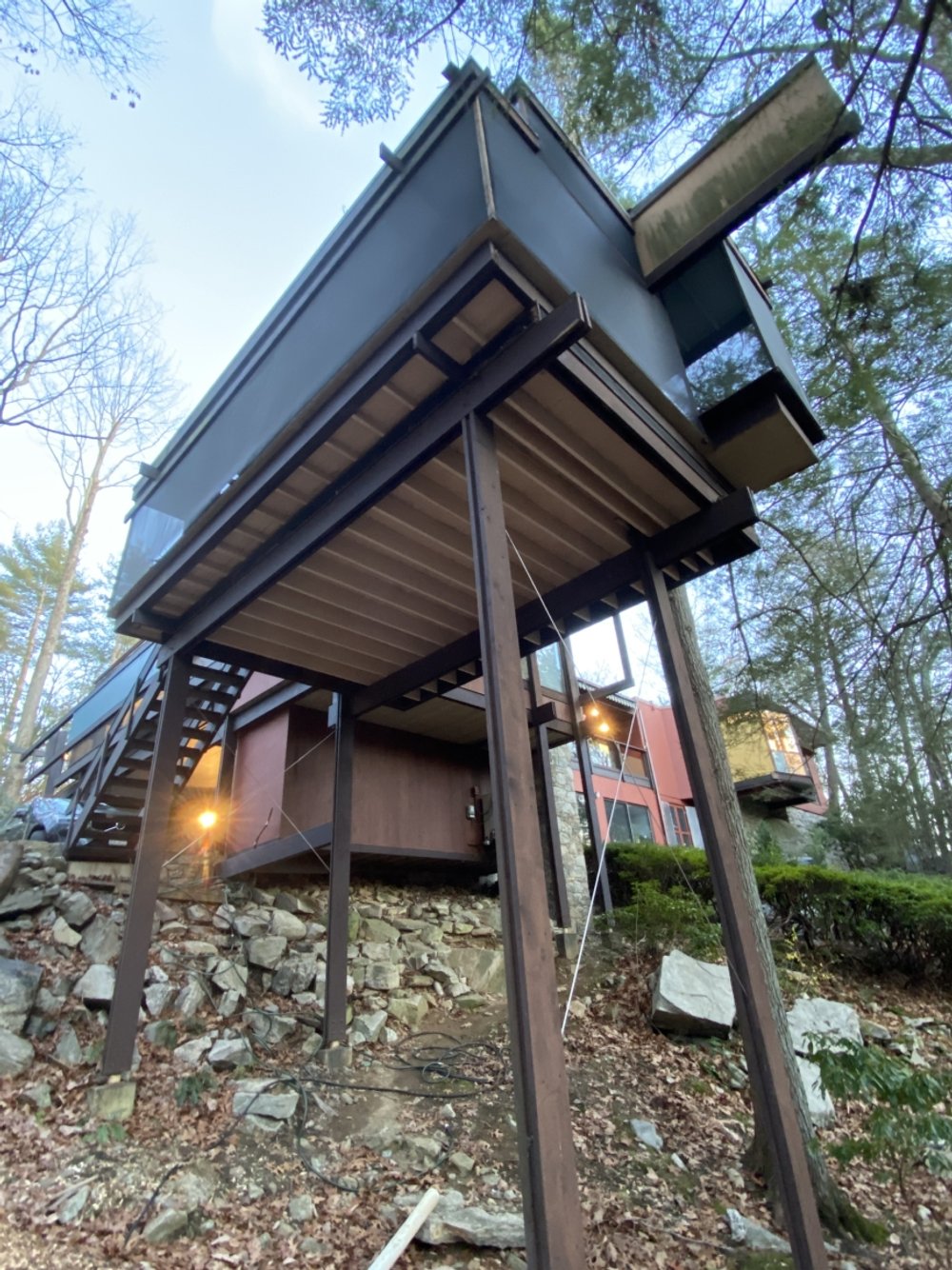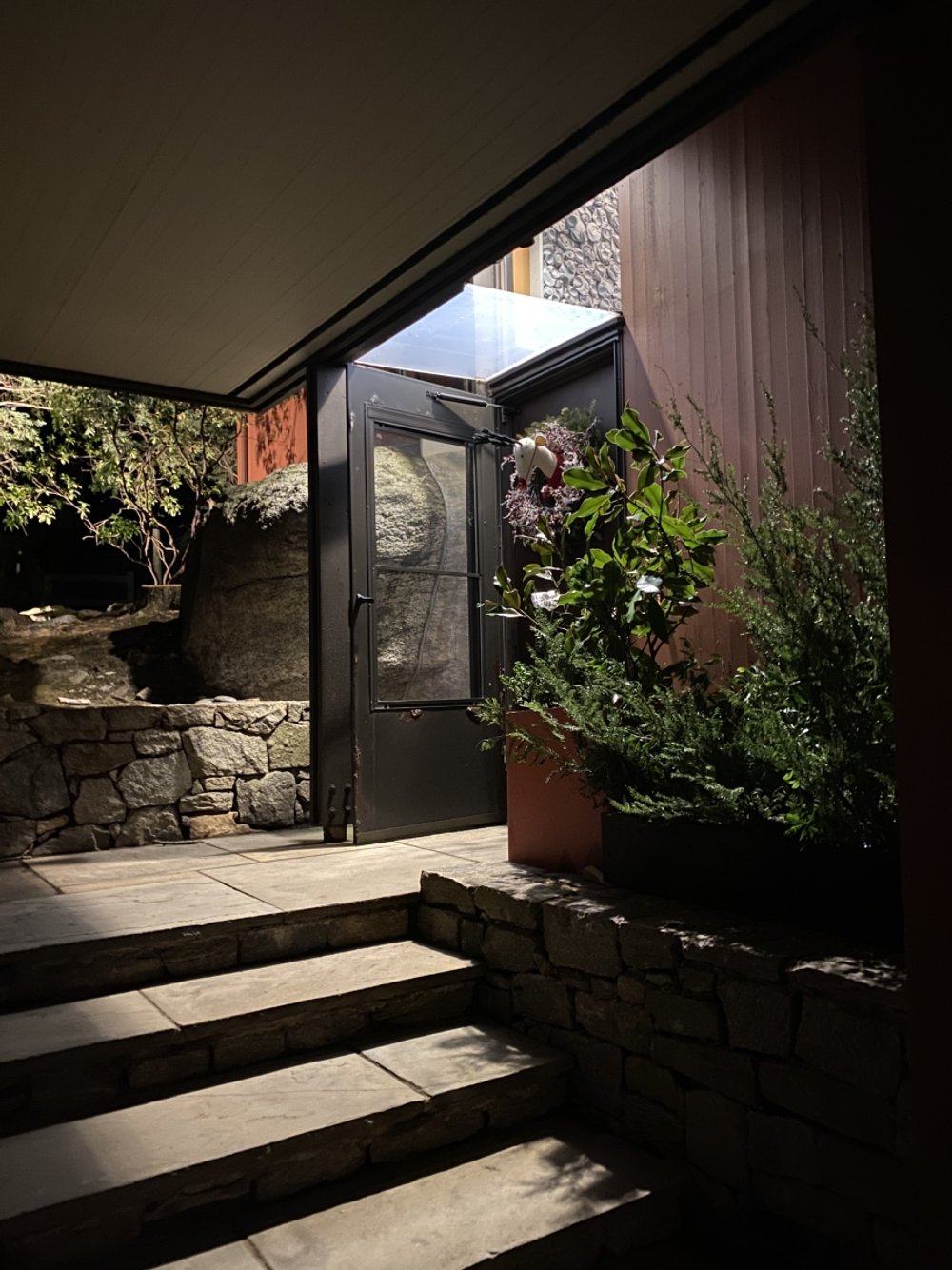Welcome to the Archives of The Paul Rudolph Institute for Modern Architecture. The purpose of this online collection is to function as a tool for scholars, students, architects, preservationists, journalists and other interested parties. The archive consists of photographs, slides, articles and publications from Rudolph’s lifetime; physical drawings and models; personal photos and memorabilia; and contemporary photographs and articles.
Some of the materials are in the public domain, some are offered under Creative Commons, and some are owned by others, including the Paul Rudolph Estate. Please speak with a representative of The Paul Rudolph Institute for Modern Architecture before using any drawings or photos in the Archives. In all cases, the researcher shall determine how to appropriately publish or otherwise distribute the materials found in this collection, while maintaining appropriate protection of the applicable intellectual property rights.
In his will, Paul Rudolph gave his Architectural Archives (including drawings, plans, renderings, blueprints, models and other materials prepared in connection with his professional practice of architecture) to the Library of Congress Trust Fund following his death in 1997. A Stipulation of Settlement, signed on June 6, 2001 between the Paul Rudolph Estate and the Library of Congress Trust Fund, resulted in the transfer of those items to the Library of Congress among the Architectural Archives, that the Library of Congress determined suitable for its collections. The intellectual property rights of items transferred to the Library of Congress are in the public domain. The usage of the Paul M. Rudolph Archive at the Library of Congress and any intellectual property rights are governed by the Library of Congress Rights and Permissions.
However, the Library of Congress has not received the entirety of the Paul Rudolph architectural works, and therefore ownership and intellectual property rights of any materials that were not selected by the Library of Congress may not be in the public domain and may belong to the Paul Rudolph Estate.
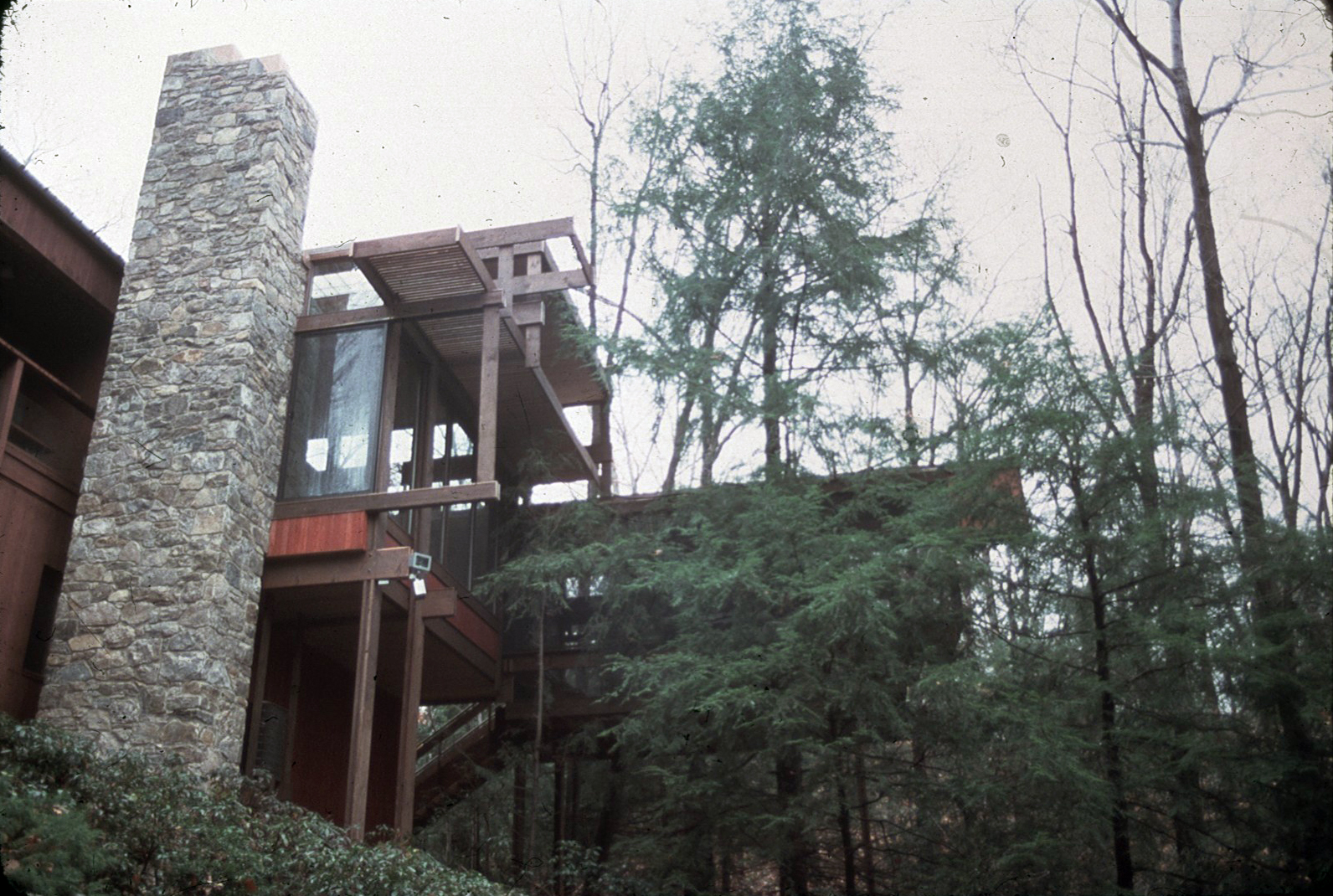
LOCATION
Address: 21 Hycliff Road
City: Greenwich
State: Connecticut
Zip Code: 06831
Nation: United States
STATUS
Type: Residence
Status: Built
TECHNICAL DATA
Date(s): 1976
Site Area:
Floor Area:
Height:
Floors (Above Ground):
Building Cost:
PROFESSIONAL TEAM
Client: Robert and Joan Bernhard
Architect: Paul Rudolph
Rudolph Staff: Peter Mullen, Project Architect
Associate Architect:
Landscape:
Structural:
MEP:
QS/PM:
SUPPLIERS
Contractor:
Subcontractor(s):
Bernhard Residence Addition
The project scope is to design an addition to an existing home for Robert Bernhard and Joan Bernhard.
Rudolph’s design turns the existing living room into a new dining room and creates an addition for a new living room, sitting room and screened porch.
The plan consists of a complex one room addition of various levels, composed of exposed wood beams and columns capable of supporting itself without the need of bearing walls. The addition connects to the second floor of the existing structure.
The interior is composed of rugged textures meant to harmonize with the outdoors.
A massive steel fireplace, oxidized to an autumn rust color, is framed by stones that are rescued from the dismantled garage.
The screened porch at the end of the plan is cantilevered 25 feet above a ravine below, floating like a treehouse among the forest.
A custom light fixture, designed by Rudolph and fabricated by his lighting firm Modulightor, made up of a thousand one-watt bulbs is centered over the dining table.
Walls of the space are used to display Stellas, Kellys and other fine art.
The interiors of this addition to an existing house consist of five functional areas: Living, Dining, Breakfast, Sitting, and a Study that is transformable (via a pivoting wall) into a more private space (probably for a guest). But rather than lay out a set of static, self-contained rooms—as would be typical of suburban homes of that era—Paul Rudolph created a fluid situation. Here, spaces are tangent, or overlapping, or slide into each other. Or they share a volume—but are differentiated by changes in level, or by a strong figurative element (like the bold masonry fireplace which punctuates the Breakfast-Dining areas).
This work shares in the formal solutions Rudolph had been exploring (and would continue to experiment with) in his own residences: the use of levels to shape the perception of the borders of a space—and guide its use; the creation of various kinds of “screens” to modulate a set of spaces; the invention of lighting that’s tailored to each individual project; the play of cozy vs. open spaces (archetypal motifs that Rudolph referred to as “the cave and the fishbowl”); the extension of linear “structural” elements, past the plane of the building envelope, in order to embrace and sculpt exterior space; and the feeling of creating an “aerie”—an airborne perch from which to survey the world.
In a space of fluidity, such as this sequence of rooms, it is also important to create places where residents can feel focused or anchored—and this is especially important in Dining Rooms. Traditionally, a prominent chandelier or a table-top “centerpiece” are the devices which designers used to signal the location of a social meeting-point—but Rudolph never stopped looking for alternative solutions, and (in his colored-pencil perspective rendering) one can see that he patterns the table’s surface itself as a means to induce that focus.
Even for a modest-sized addition like this, Rudolph brought put full compositional powers to work on the assignment—and created a linked set of spatial experiences that are functional, subtle, textured, and never without visual interest. In the words of Tim Hayduk, “He was not a lazy architect!”
DRAWINGS - Design Drawings / Renderings
DRAWINGS - Construction Drawings
DRAWINGS - Shop Drawings
PHOTOS - Project Model
PHOTOS - During Construction
PHOTOS - Completed Project
PHOTOS - Current Conditions
LINKS FOR MORE INFORMATION
RELATED DOWNLOADS
PROJECT BIBLIOGRAPHY
Keren Dillard. “A Midcentury-Modern Forest Oasis by Paul Rudolph Lists for $2.9M.” Dwell, 23 June 2022
“Paul Rudolph.” Global Architecture Houses, no. 6, 1979, pp. 84–87.
Susan Grant Lewin. “A Sweeping New View of Rustic Living.” House Beautiful, vol. 122, no. 1, Jan. 1980, pp. 80–83.
Wendy Bowman. “Paul Rudolph-Designed Midcentury Gem Up for Grabs in Connecticut.” Dirt, 29 June 2022












